
About UsThe Numismatic Bibliomania Society is a non-profit organization devoted to the study and enjoyment of numismatic literature. For more information please see our web site at coinbooks.org SubscriptionsThose wishing to become new E-Sylum subscribers (or wishing to Unsubscribe) can go to the following web page link MembershipThere is a membership application available on the web site Membership Application To join, print the application and return it with your check to the address printed on the application. Membership is only $20 to addresses in the U.S., $25 for First Class mail, and $30 elsewhere. For those without web access, write to: David M. Sundman, Treasurer AsylumFor Asylum mailing address changes and other membership questions, contact David at this email address: dsundman@LittletonCoin.com SubmissionsTo submit items for publication in The E-Sylum, just Reply to this message, or write to the Editor at this address: whomren@gmail.com
BUY THE BOOK BEFORE THE COIN |
- WAYNE'S WORDS: THE E-SYLUM JULY 26, 2015
- NBS EVENTS AT THE 2015 ANA CONVENTION
- CHARLES DAVIS SALE CLOSES SEPTEMBER 12, 2015
- NEW BOOK: CHERRYPICKERS' GUIDE, 6TH EDITION, VOLUME I
- NEW BOOK: BUST DIME VARIETY IDENTIFICATION GUIDE
- NEW BOOK: BANKNOTES OF BRITISH MALAYA
- NEW BOOK: 2014 ROYAL CANADIAN MINT REPORT
- BOOK REVIEW: COIN OF THE YEAR’
- BOOK REVIEW: MEDALLIC ART OF THE ANS, 1865-2014
- NOTES FROM E-SYLUM READERS: JULY 26, 2015
- HOW TO KEEP ROBBERS AWAY FROM YOUR COIN COLLECTION
- THE AMUSEMENT PARK DIME
- H. C. KENDRICK OF BOSTON: NO DEMAND FOR GOLD DOLLARS
- 1872 LIBERTY SEATED DOLLAR WITH 'REJECTED' COUNTERSTAMP
- AN ANTIQUE COIN CURIOSITY FOUND IN A BARN
- THE ROYAL SOCIETY'S COPLEY MEDAL
- BRENNER AND WHISTLER'S PEACOCK
- MORE ON MEDALS MADE OF SOAP
- THE COIN-TREE IN BRITAIN AND IRELAND
- ON FREY'S DICTIONARY OF NUMISMATIC NAMES
- OTHER 2015 ANA CONVENTION EVENTS
- SPRAGUE & BLODGETT’S GEORGIA MINSTRELS COUNTERSTAMP
- INTERNATIONAL CONFERENCE ON JOSEPH ECKHEL A SUCCESS
- JAMES DODSLEY CUFF (1780-1853)
- COUNTERFEITER TARGETS HONG KONG FANCY SERIAL NUMBERS
- QUERY: SHIPMENT DATE SOUGHT FOR 1941-S FRENCH INDOCHINA COINS
- WWII HEROINE VIOLETTE SZABO'S MEDALS SOLD
- COUPLE SEARCHES FOR WWII ARCTIC MEDAL HERO
- SOME RECENT COIN DESIGNS: JULY 26, 2015
- HOWARD DANIEL'S 2015 SUMMER FUN SHOW REPORT
- WAYNE'S NUMISMATIC DIARY: JULY 26, 2015
- KÜNKER AUCTIONS 263-264 RESULTS
- THE BOOK COLLECTOR
Click here to access the complete archive
To comment or submit articles, reply to whomren@gmail.com
WAYNE'S WORDS: THE E-SYLUM JULY 26, 2015

New subscribers this week include: Dan Holmes of Whitman Publications. Welcome aboard! We now have 1,853 subscribers.
This week we open with a reminder of NBS events at the ANA convention, a sale announcement from Charlie Davis, four new books, and two reviews. Other topics include the Amusement Park dime, the Copley medal, the Arctic Convoy campaign medal, medals made of soap and coin trees.
To learn more about Violette Szabo's medals, Rittenhouse Rye, Whistler's Peacock, minstrel shows, coins from the sacred well of the nymph Coventina, and the worst journey in the world, read on. Have a great week, everyone!
Wayne Homren
Editor, The E-Sylum
NBS EVENTS AT THE 2015 ANA CONVENTION
Thurs., August 13, 11:30 am to 1:00 pm, NBS Symposium, Room 22
Thurs., August 13, 1:00 to 2:30 pm, NBS Board Meeting, Room 24
Friday, August 14, 11:30 am to 1:00 pm, NBS General Meeting, Room 5
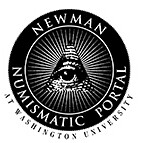 On Thursday, August 13, the Newman Numismatic Portal (NNP) team will present at the NBS Symposium at 11:30AM. This website, funded by the Eric P. Newman Numismatic Education Society and administered through Washington University in St. Louis, focuses on gathering and preserving numismatic knowledge for the benefit of all collectors and researchers. Project consultants include well-known bibliophiles Len Augsburger, Roger Burdette, John Feigenbaum, Wayne Homren, and Joel Orosz. The NNP team will demonstrate the current website and discuss the roadmap going forward.
On Thursday, August 13, the Newman Numismatic Portal (NNP) team will present at the NBS Symposium at 11:30AM. This website, funded by the Eric P. Newman Numismatic Education Society and administered through Washington University in St. Louis, focuses on gathering and preserving numismatic knowledge for the benefit of all collectors and researchers. Project consultants include well-known bibliophiles Len Augsburger, Roger Burdette, John Feigenbaum, Wayne Homren, and Joel Orosz. The NNP team will demonstrate the current website and discuss the roadmap going forward.
To view the complete convention schedule of events, see:
/www.money.org/worldsfairofmoney/schedule
CHARLES DAVIS SALE CLOSES SEPTEMBER 12, 2015
 Our next auction of numismatic literature, with a closing date of September 12, will posted on our www.Numisbook.com site shortly, and catalogues will be mailed this coming week. Highlights include Crosby’s Early Coins of America, unbound in its original 11 wrappers - the only such copy I can find being offered in at least 35 years (For the Crosby/Wester copy, all sections were laid into Part 1 only wrappers).
Our next auction of numismatic literature, with a closing date of September 12, will posted on our www.Numisbook.com site shortly, and catalogues will be mailed this coming week. Highlights include Crosby’s Early Coins of America, unbound in its original 11 wrappers - the only such copy I can find being offered in at least 35 years (For the Crosby/Wester copy, all sections were laid into Part 1 only wrappers).
We also offer the Charles Horning collection of 130 Bangs catalogues and about 20 early plated American catalogues including many of the tough Chapmans - Henderson, Taylor-Windle, Bascomb & Brown, Alvord, Jenks, Sleicher, and two Stickneys. A 75 lot section of large cents is highlighted by Howard Newcomb’s annotated copy of his work of the Cents of 1816-1857 establishing that the book was in fact published before his death.
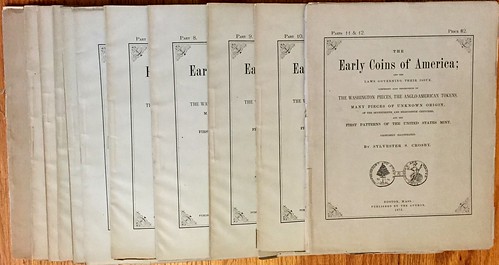
Lot 293: Crosby's Early Coin of America
The ancient and medieval section includes a fine offering of Greek including numerous early 20th century plated catalogues from Hirsch, Naville, Sothebys etc as well as standard references (Jenkins Gela, Grose McClean, original MFA Boston, and Schlumberger’s rare 1884 foundation work on Byzantine seals.) The British section includes a handsome priced and named Montagu, a finely bound sales room copy of the 1954 Farouk catalogue, and a set of Forrer’s Biographical Dictionary in the original Spink binding.
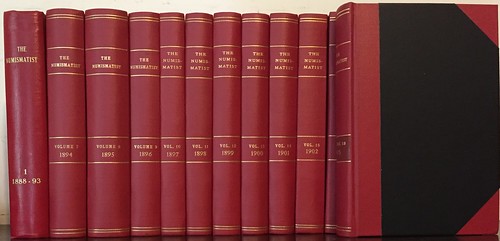
Lot 214: The Numismatist
Long runs include an attractive bound run of The Numismatist 1894-1946, an equally long bound run of the Numismatic Chronicle 1860-1920, and a complete set to date of the Sylloge of Coins of the British Empire. Of the 993 lots, we have already posted photographs of close to 300 at
To view the complete catalog, see:
Longtime die-variety specialist Mike Ellis joined the Cherrypickers’ team as editor of the new volume, working with the book’s original creators, Bill Fivaz and J.T. Stanton.
“Cherrypicking” involves examining coins to find those that look common at first glance, but have unusual characteristics (like doubled and tripled dies, overdates, and repunched mintmarks) that make them rare and valuable. An example is the 1873 Indian Head cent with a doubled obverse (pictured on the book’s cover). The normal coin can be bought for about $125 in circulated condition, while the doubled-die variety in the same grade is worth $2,000.
The new volume is 48 pages longer than the fifth edition and features 150 new varieties. “Lincoln cent collectors are the biggest winners with the latest Cherrypickers’ Guide, with 43 new varieties, including many moderns,” said Whitman publisher Dennis Tucker. “Also, the Buffalo nickel and Jefferson nickel chapters have each nearly doubled, with 31 and 34 new varieties, respectively.” Other series that include more than 10 new entries include two-cent pieces, Shield nickels, and Indian Head cents. There are additions to the Flying Eagle cent and Liberty Head nickel series, as well.
Ellis and Fivaz coordinated the efforts of more than 15 die-variety specialists from around the country, updating retail prices, rarity ratings, and various market factors for each coin. The new book gives special attention to the Two Feather varieties of Buffalo nickels, the doubled dies of the 2009 Lincoln Bicentennial cents, and various Close AM and Wide AM cent varieties.
The front of each chapter conveniently lists new entries, as well as entries scheduled to be removed from future coin-by-coin listings, and old entries that have been debunked by modern research.
The Cherrypickers’ Guide can be pre-ordered online before its September 2015 rollout, including at www.Whitman.com.
# # #
The Cherrypickers’ Guide to Rare Die Varieties of United States Coins, sixth edition, volume I.
ISBN 0794843182
To more information, or to order, see:
The book will assist collectors and dealers in attribution of all bust dimes through easy-to-follow explanations and color pictures. The book offers much more, too. Readers will appreciate the summary information for each year of mintage, discussion of number of estimated known examples, explanation of die marriages of known Proofs, and updated rarity ratings by die marriage. There are color pictures for each die marriage and a lot more information. This will be a must-own book for all bust dime collectors, cherry pickers, dealers in bust coinage, and anyone else that wants to learn more about bust dimes.
The book is at the printer right now and will be available at the Wednesday, August 12th JRCS meeting at the ANA show. If you can’t make the meeting, the book will also be available for $49 per copy at two tables on the bourse floor: David Wnuck Numismatics (table #920) and David Kahn Rare Coins (table #724). After the show, books will be available from Rich Uhrich Rare Coins, Americana Rare Coins, David Wnuck Numismatics, and David Kahn Rare Coins.
This guide provides very detailed descriptions of all Bust Dimes from 1792 to 1837 including exceptional color photographs for all die marriages to assist in attributing any Bust Dime quickly and easily.
To read the complete flyer, see:
Saturday the 15th of August will be an exciting start for the Spink events at the exhibition. The 15th will see the launch of the long-awaited Banknotes of British Malaya, The Frank Goon Collection including The Straits Settlements, Malaya, British North Borneo, Sarawak, Brunei, Malaysia and Singapore (2nd edition) by Frank Goon. Published by Spink, the 2nd edition is a masterpiece and a testament to a lifetime of banknote collecting. It is also the first volume in the Spink ‘Connoisseur’ Series, a must for any collector of the Straits areas and a seminal reference work.
Frank Goon’s love of collecting began at an early age, his curiosity piqued at the sight of older boys using Japanese Banana money as ‘monopoly’ money as after the Second World War these notes had very little value. When collecting, his interests began to centre around non-issued notes; in the form of colour trials, essays, partially printed or rare ‘one-off’ notes prepared by the printing houses for the approval of various governments. Subsequently, his collection includes some of the most beautiful partially printed proofs, meticulously hand-executed essays, specimens and issued notes – some of which are entirely unique!
Spink is delighted to have had a hand in bringing this book to the world, and sincerely hopes that it will be a book for collectors and dealers to use as the ultimate reference work on this beautiful and historic series of banknotes. Every country needs a ‘Frank Goon’ to commend this hobby to the world at such a high level.
For more Information, please contact Jennifer Mulholland:
To read the complete press release, see:
To read the complete report, see:
BOOK REVIEW: ‘COIN OF THE YEAR’ – FIRST BOOK OF ITS KIND
The book’s author, Donald Scarinci, wrote only a two-page introduction, “In Celebration of Achievement” and a paragraph on each top year’s winner. The photographs were taken by the author of coins from his own, nearly complete collection. “All but four “ the author tells me, “the four most difficult to obtain, the four palladium pieces.” He wanted it to be a picture book.
The book is a first in its own right of delineating the beauty of a country’s most visible national image – its coins. How appropriate the first coin awarded that title in 1984, honored the first President of the United States, George Washington, in the first modern U.S. commemorative, the dollar coin of 1982, It was created by the first female Chief Engraver of the United States, Elizabeth Jones (with reverse by Matthew Peloso). The book is a testament to numismatic innovation.
Sponsored by Krause Publications, the coins are selected for the Coin of The Year award from as many as several hundred nominations. The best ten are presented to the judges, all officials of Krause Publications, with one outside judge, the author, Donald Scarinci.
The coins are judged for their beauty, significance, innovation and creativity. Design dominates the selection.
Modern coinage technology, it seems, has advanced so far that every mint in the world, can produce perfectly struck specimens. It remains only for their design to make them distinctive. New coinage innovations have given rise to such coin features as: exotic edge lettering, ring blanks creating bi-metallic and tri-metallic coins, pad printing of color on a coin’s surface, inserts and inlays. not to overlook unusual shapes. All are present in the 280 winners dramatically shown in the book.
While the coins are the visible winners, the mints, designers, engravers and modelers are the real winners. The award has inspired world mint officials to vie for the prize, giving greater attention to what can be attractive, significant and popular among their own population as well as collectors of the world. Perhaps that was the intention of Chet Krause and Cliff Mishler back in 1984 when they created and launched the program.
Now for the categories. Fourteen categories have been awarded over the thirty years, new categories being created as conditions required, but never more than eleven in any one year. On five occasions tie awards were bestowed.
In the first year two coins won in six categories. We suspect only two to start, they added four others later, perhaps when they chose six categories the second year, 1985. The first six were: Most Historically Significant, Most Artistic, Most Popular, Best Gold. Best Silver, Best Crown. Those six were awarded in virtually every year across the thirty-year span..
Best Trade Coin was added in 1987. Most Innovative in 1990 -- we can date the surge in modern coining technical innovations from this year. Most Inspirational was added in 1995. Best Contemporary Event was added a year later.
Peoples Choice, added in 2008 allowed the public to have a say in the selection. Two recent categories were added last year, 2014, for Best Bi-metallic and Best Circulating Coin.
An Index at the back of the book has a brief description of each winner. It follows the format from Krause’s World Coins publications: catalog number, denomination and composition listed for each country’s winners. It even lists the years that type was issued, quantity struck and prices in several conditions,
And now for some notable winners. The best of each year is chosen from the winners in each category. So to choose One –the Best of the Best, the Grand Prix, the Best in Show, The Gold is chosen from the top winner in each of the thirty years.
May I have the envelope please! And the winner is …
The French Five Franc of 1991! It is the only coin which won in three categories in thirty years. They were: Most Artistic, Most Popular, Best Trade Coin. It featured the Eiffel Tower issued on its centennial, in an unusual perspective looking up the structure yet filling the circular boundary of the coin at the base.
Other notable winners:
“I began collecting Krause Coin of the Year coins,” says author Scarinci, “shortly after I was appointed to the Citizens Coinage Advisory Committee in 2005.” This collection “focuses attention on new artists and on the world mints who strive to depict the past and the present in new and modern ways.”
He has shown these coins to U.S. Mint officials in the past with the intent to encourage more modern and attractive coin designs for United States coins. Now he will have a bound document to present to fellow CCAC members and those reluctant Mint officials to influence their decisions for better coin designs of the future. Undoubtedly this book will be the center of attention at the next CCAC meeting.
The book is the most beautiful Krause has published Every collector of world coins will find it of immense interest.
To read the earlier E-Sylum article, see:
Reviewed by David Thomason Alexander, ANA LM #1973
July 2015.
The American Numismatic Society (ANS) is now in its 157th year of service to the world of numismatics. It is the premier numismatic research institution in the Western Hemisphere and one of the global leaders in the study of coins and medals struck since ancient times.
To many American collectors, the name ANS evokes images of profound research and specialized publications, especially in the field of ancient coins where the Society has long been a recognized world leader. Looking over a complete listing of ANS publications proves demonstrates 150 years of undisputed leadership.
However, as author Scott H. Miller makes clear in his new study and catalogue of medals issued by ANS, the Society has also been an active participant and leader in the ongoing development of the American medal from the era of the Civil War down to our own time. The 60 medal issues Miller cites are an important part of the corpus of U.S. medals thanks to their issuer, the stature of the artists and the events honored.
Brooklyn native Miller has devoted decades to study of British and American medals. A Fellow of ANS, he is a Past President of the New York Numismatic Club (NYNC) and was a founding member of Medal Collectors of America (MCA) in 1998.
His new ANS medal book is the second in the Society’s Studies in Medallic Art; the first was David Thomason Alexander’s 2010 American Art Medals, 1909-1995, the Circle of Friends of the Medallion and the Society of Medalists. The two titles are the leading edge of in-depth research and publication in the field of the American medal.
Medal collecting has lagged far behind since numismatics took fire in the U.S. in the 1850’s. Accurate, readable, complete in-depth studies of American medals simply have not existed to encourage and guide interested collectors. This is in dramatic contrast to the nearly microscopic study of such coin as U.S. Large Cents.
ANS was founded just as the discontinuation of the Large Cent and Half Cent gave major stimulus to the birth of numismatic collecting in the U.S. Hundreds of Americans started collecting these coins and many soon branched out into other areas of coinage, as well as to medals and tokens.
There were many medal enthusiasts at the start. The first medal collectors were heavily influenced by the patriotic impulse that also propelled collecting of U.S. coins. Medals of George Washington attained great popularity and collectors clamored to obtain the many examples of privately produced Washingtoniana that appeared on the eve of the Civil War.
War brought a hiatus to medal issues and to the infant ANS, and as Miller points out, the coming of peace restored life and activity to both. Reactivated under the name American Numismatic and Archaeological Society, ANS was just shaking off its wartime lethargy when the assassination of President Abraham Lincoln galvanized its members and gave birth to its ongoing medal program.
Author Miller defines 60 pieces as ANS medals, beginning with the 1866-1867 Abraham Lincoln Memorial Medal. Each medal is illustrated in full color with Alan Roche’s masterful digital images. The artists and sculptors are identified along with each manufacturer, diameter are given in millimeters, listing of metals in which pieces were struck, issue prices and the numbers struck where possible.
The history of each issue is explored in great detail. For instance, Miller’s thorough research reveals that the 83 millimeter bronze and tin Lincoln medal was the most complicated of the entire series. In presenting its tangled story, the author demonstrates his skill and determination to uncover the facts, eliminate long-enduring myths and present the full story in convincing and readable style.
The complexities of this first medal are fully explored. The engraver of the dies for this medal was New York’s Emil Sigel, whose other known work was limited to Civil War tokens and private merchant’s issues. He was one of a large number of German die sinkers working in New York City that were mainly clustered in lower Manhattan.
Sigel was prolific, and among his best-known signed Civil War tokens were cent-sized coppers hailing a cousin, the 1848 German democratic refugee General Franz Sigel as “Hero of Pea Ridge.” That was an epic battle in the Western Department whose pivotal importance was muted by its trivial-sounding name.
Creating the dies for a medal of such exceptionally high relief and broad diameter must have been a challenge for a humble token engraver. The heroic height of the Lincoln’s bearded, frock-coated bust and the stark flatness of the obverse field have been cited as the causes of almost insuperable difficulties in striking the pieces.
Ripping through the hoary hand-me-down tales traditionally associated with this historic medal, Miller quickly explodes the long-repeated anecdote that the dies broke after only 16 medals were struck, impelling the nimble Sigel to convince the ANS medal committee of the need to cut entirely new dies.
The author demonstrates that the breakage only affected the shoulder of the obverse die and proves that all known Lincoln medals were struck from these dies, whether in bronze or softer “block” tin. New dies were made and paid for but were not actually used until 1915 and then only to strike two archival specimens in Lead. ANS learned a costly lesson about engravers, medal-making and accountancy.
The author also explores the history of the reductions of the Lincoln Medal in seven-, 16- and 35mm diameters made in England by J.S. and A.B. Wyon that have long puzzled bewildered collectors. He shows that the minute pencil eraser-sized 7mm medals were uniface with no reverse design in place.
After recovering from the stress of the Lincoln medal, ANS contracted with famed die sinker George Hampden Lovett in 1876 to produce its first Membership Medal, a 42mmn design struck in gold, silver and bronze. Its obverse presented an early version of the Society’s seal, three oak leaves and three acorns below the Latin motto PARVA NE PEREANT, Let not the Small Things Perish.
Miller’s determination to clarify the historical record is seen in his coverage of the 42mm Cleopatra’s Needle Medal of 1881. Struck in gold, silver, bronze and white metal, this medal commemorated the placing in New York’s Central Park of an obelisk of Egyptian Pharaoh Thutmose III that was a gift of the Khedive of Egypt.
Financing the complex task of transatlantic shipment of the multi-ton monolith was William H. Vanderbilt, assisted by two New Yorkers active in the Society, Robert Hewitt Jr. and Algernon Sidney Sullivan. There was a heavy Masonic flavor to this event, which might explain Bauman F. Belden’s omission of Cleopatra’s Needle from his early listing of ANS medals.
The unique gold example surfaced in Stack’s 2012 Americana auction, where it was catalogued by the reviewer, and was purchased on behalf of the Society.
ANS medals began appearing with some regularity in the 1880’s, including Swedish sculptor Lea Ahlborn’s contributions. She created the 1883 medal for the Centennial of the British Evacuation of New York; 1884 Memorial Medal of ANS President Charles Edward Anthon; and 1890 46mm medal honoring ANS incorporator and scholar Daniel Parish Jr.
The name Tiffany & Co. appears with the 1893 Christopher Columbus Quatercentenary (sic) Medal, which attracted criticism by hailing manufacturer Tiffany on the obverse while ignoring designer James H. Whitehouse and engraver William Walker. This 77mm medal was struck in the wake of the World’s Columbian Exposition in Chicago, where a proposed numismatic display had been rejected. It appeared in silver and both “bronze and gold bronze” finishes.
The name of Victor David Brenner appears on six ANS medals, starting with the 50mm medal for the Opening of Saint Luke’s Hospital in 1896. A Jewish immigrant from Russian Lithuania, Brenner prepared his earliest medal dies by cutting by eye directly into the die steel, but after study in Paris under Louis Oscar Roty, his later works were created by sculpting large-diameter models for reduction by the Janvier Reducing Machine.
The Saint Luke’s medal was also notable for its distinctive portrait of the patriarchal William Augustus Muhlenberg. Miller’s choices of illustrations includes a reproduction of an oil portrait of Muhlenberg attributed to F.O.C. Darley and joins a fascinating studio photo of youthful artist Brenner. Photos of presentation cases and publicity shots appear throughout the book, adding substantially to its appeal.
The author unearths some remarkable facts. The 64mm Greater New York or Charter Day Medal of 1898 by Edward Hagaman was struck by Tiffany to mark the consolidation of the five boroughs. This medal was presented in gold to the aged Andrew H. Green, “Father of Greater New York,” whom Miller tells us “was murdered by a man who had mistaken him for another elderly gentleman who had stolen the killer’s girlfriend.”
Consolidation also inspired ANS President Andrew C. Zabriskie’s attempt to fold ANS into the New-York Historical Society. This attempt would have obliterated the Society and its work. Its failure thanks to a members’ uprising brought forward Archer M. Huntington as the great benefactor and leader of a still-independent ANS.
Brenner went on to create ANS medals and plaquettes honoring Prince Henry of Prussia (brother of Kaiser Wilhelm II), explorer Amerigo Vespucci and Revolutionary naval hero John Paul Jones that are among the most sought-after by modern collectors.
Jules-Ėdouard Roiné is another name that appears in the roster of ANS medalists in the early 1900’s. Miller resolves the long-disputed status of his 1908 plaquette honoring Algernon Sidney Sullivan (1826-1887), Indiana-born jurist and philanthropist with deep Virginia connections who spent much of his legal career in New York City.
Sullivan was a beloved figure by young and old especially in the circles of New York’s Southern Society and in the legal community. His son George H. Sullivan set up a Memorial Fund in his father’s memory to present these plaquettes inserted in hard-cover books each year to five of the most deserving young lawyers who had launched careers in the city.
Reading this eulogistic book today reveals that the honoree was a man of almost messianic greatness and virtue. His son expected ANS to administer this medal program, select annual winners and present the medals, a task far beyond the Society’s purview. Presenting the issue’s complete history has resolved this question and proven the ANS connection.
Miller decided otherwise in the question of the 1910 Actors’ Fund Medal, a 69mm piece designed by the great sculptor Chester Beach. Archer M. Huntington commissioned this medal and examples are known with a minute ANS seal in the field below the figure of Tragedy on the obverse.
Medals are also encountered without the seal, leading the cataloguer to conclude that this feature was an accidental addition to the design triggered by Huntington’s known interest in the fund. His role with the New Theatre of New York was enough to make its sumptuous 1909 Opening Medal an ANS issue.
Collectors will welcome the coverage of the 1909 Hudson-Fulton Medal, one of the most amazingly common of all American medals. Commemorating Henry Hudson’s discoveries of New York harbor and the river named for him and recalling Robert Fulton’s first steam-powered voyage to Albany, this issue by Austrian-born artist Emil Fuchs exists in six diameters and five metals from four-inch silver to three-inch gold on down to 1¼ silverplate.
A 1910 plaquette by Belgian medalist Godefroid Devreese for the International Medallic Exhibition hosted by ANS appears with only two each struck in gold and bronze. There is no explanation for the failure to issue more. The obverse shows Columbia standing on clouds with a laurel branch and flag while a nude male with lyre appears to be falling from the sky at left, an uncomfortable design that may simply have turned off the ANS committee.
World War I saw a number of ANS medals honoring Allied leaders and America’s role in the struggle. During this era, Adolph A. Weinman created the coveted 1919 J. Sanford Saltus Award Medal, the same year that John Flanagan designed his handsome medal hailing the New York visit of Britain’s Prince of Wales, later Duke of Windsor.
The late 1930’s and the years 1945-1976 saw release of few ANS medals. The Society’s 1958 Centennial Medal by Laura Gardin Fraser stands nearly alone. Its bold design concept was that “Nature created the first dies,” and received praise from many observers who overlooked some gaffes.
The late Cornelius C. Vermeule deplored “the ill-proportioned square-faced brute” discovering a split fossil on the obverse and “the twin mountains of muscle bending over their great anvil and huge casting-type dies on the reverse.” (Numismatic Art in America, Cornelius C. Vermeule, second edition revised by David T. Alexander, Whitman Publishing, 2007, p. 170).
Miller’s research shows that ANS medals have appeared in intermittent bursts: nineteenth century, Gay ‘90’s, early 20th century. World War I. The Roaring 20’s were busy, while an ongoing sprinkling of Society-related commemoratives and members’ medals spanned the decades.
Much of the early 20th century activity must be credited to the active interest and generosity of such member-benefactors as J. Sanford Saltus, whose death in 1922 left an unfilled void. Then too, the Great Depression (“the invisible scar”) and Second World War had a numbing effect that lingered on until the 1950’s.
The World War II years were a particularly sterile era for Society medals, and only in 1976 was more or less continuous activity resumed with such issues as the city and state Bicentennial medals, Eugene Daub’s majestic Statue of Liberty Centennial oval and Marcel Jovine’s imposing 125th Anniversary Plaquette of 1983.
Comprised of only 60 medals, the series might be considered relatively brief, yet it contains almost limitless treasures of numismatics, art and history. Rarities abound and there are almost certainly additional discoveries to be made. As author Miller observes, the story of the American Numismatic Society and its medals is not over, but continues into the future.
For more information, or to purchase, see:
On The E-Sylum
Regarding last week's E-Sylum, Dave Bowers writes:
One of the finest/best issues ever!
Ken Potter writes:
I especially liked the pattern coins.
Dave Ginsburg writes:
I must say, The E-Sylum is, for me, the most interesting numismatic publication going – smart contributors, interesting contributions, a truly wide scope of contributions and an absence of focus on microscopic die varieties and other things in which I’m not really interested.
My hat’s off to you for doing such a great job as editor for these many years!
To read the earlier E-Sylum issue, see:
The Elbeshausen Catalogue
A couple weeks ago, David Pickup asked, "Would any of our readers know what the German word Bergrechnungsmarke means or have heard of a catalogue called Elbesh?"
We got some great answers to the first question, but not the second.
Ralf Böpple of
Stuttgart, Germany writes:
The author's correct name is "Elbeshausen", and the main reference is Elbeshausen, Siegfried - Oberharzer Jetons aus den Münzstätten der Welfen. Berechnungsmarken - Huntslaufzeichen - Münzmeisterpfennige - Jetons von Bergbeamten. Bremer Beiträge zur Münz- und Geldgeschichte 5, 2006, 392 pp, ISBN 3-00-020054-1
To read the earlier E-Sylum articles, see:
The Atocha Money Chain
Ken Bressett writes:
The Atocha Money Chain is indeed real. I am fully convinced that it is as represented and could easily have been used in trade or barter as a convenient source of ready money. I was fortunate to see much of the Atocha treasures first-hand when I dove with the Fisher crew in 1986. I fondly remember my going-away party when I was allowed to wear that very chain around my neck as treat throughout the evening festivities.
To read the earlier E-Sylum article, see:
No Coin is Magnetic
Regarding the blog article from the Royal Mint, Kavan Ratnatunga writes:
No Coin is Magnetic. A steel-based coin will be attracted by magnets.
If coins were magnetic they would stick to each other and that is not a desirable property.
I made this comment almost 20 years ago when Sri Lanka first issued
cupro-nickel plated steel coins in 1996. I just wish to clear up the bad use of the term 'magnetic' for coins.
To read Kavan's complete article, see:
To read the earlier E-Sylum article, see:
Isle of Man Coin Provenance
Regarding Peter Preston-Morley's question about the provenance of two Isle of Man coins,
Patrick Ian Perez of
Specialized Currency, LLC writes:
I have a copy of the 1990 Sussex Collection catalog, and I cannot find the Isle of Man items Peter is referencing. Lots 3426 and 3427 are Morgan Dollars. The fifth session of the auction (Lots 5001-5459) does consist of "Medals, Coins, and Tokens from the Virgil M. Brand Estate" but nothing from Isle of Man. I also have the catalog of the Hans Schulman sale of November 20-25, 1964 which has a consignment from Brand but unfortunately no Isle of Man material.
The auction lot descriptions that are pictured have got me interested, I am going to check a few other catalogs... I think these may be from the Norweb collection.
I asked John Kraljevich, who writes:
They're not from the 1983 Brand sale -- mine were within arm's reach just now. But Patrick's eye for the font is definitely correct. That font wasn't used anymore when Norweb rolled around, but it's from some ca. 1980-1984 Bowers & Ruddy or Bowers & Merena sale I'm sure.
To read the earlier E-Sylum article, see:
To read the earlier E-Sylum article, see:
Last week Bill Rosenblum wrote about a family that kept their gold coins in their dog's bag of food:
They were very distrustful of banks and kept their gold coins in a box which they placed in a huge bag of dog food believing that their guard dog would protect their coins better than a safe deposit box.
Brad Karoleff writes:
This reminded me of a visit I made to a customer's house many years ago to deliver a couple of coins he wanted. It was my first trip there and he wanted to "show me the sights" of his other collections.
He was a collector's collector and had a world class collection of US license plates and barbed wire mounted on large pegboard sheets in his basement. There was a SMALL winding path between the stacks. He also collected reptiles and spiders. They were housed in numerous cages, aquariums and child swimming pools in the garage. Yes, you could only gain access by winding through the maze of license plates and barbed wire!
After arriving at the end of the maze I knew what the mice felt like before he fed them to the snakes. Many of the aquariums were stacked one on another and I thought that at any moment they would topple releasing their captives to lunch on yours truly. Now, I am not very fond of snakes or spiders the size of my hand so I was a little uncomfortable. I began to look for somewhere to sit down to reduce the possibility that I would knock over a stack of vipers. As I was about to sit on the side of a metal child's pool he chided me that the crock inside could, and would, bite me in that position.
I directed the conversation to the coins I had brought and he mentioned that we had to come to that portion of the house so he could compare a couple to what he already owned. I was confused until he removed a couple of Dansco albums from the rattlesnake pit. He explained that when he had coins at home he put them there for safe keeping. He didn't think the average thief would care to deal with the snakes to see what was in the books. I think he was right!
Not everyone needs a guard dog when they have an alligator and numerous poisonous vipers as part of their "collection".
To read the earlier E-Sylum article, see:
The Philadelphia Mint had neglected to place a Mint mark on one or two dies. Coins with a noticeably strong strike surfaced in Sandusky, Ohio. Many were unknowingly given out in change at the city’s Cedar Point Amusement Park.
In an article in the Central State Numismatic Society’s journal, The Centinel, Steven Bieda wrote, “In March or April of 1982 the amusement park requested its seasonal allotment of coins through Citizens Bank. The bank ordered the coinage from the Federal Reserve Bank in Cleveland. As it turned out, the vast majority of the 1982 No-Mint Mark dimes were contained in this order.”
Less desirable coins with a weak strike were released in Pittsburgh.
Bieda noted that some think that all the No P dimes were struck from the same set of dies, but that the pressure used to strike the coins was raised during the production cycle, resulting in a sharper strike.
Strong-strike 1982 No P dimes catalog for $300 in Mint State 65 in Coin World’s Coin Values. Weak-strike coins are not cataloged there, but tend to sell for less than half the value of strong-strike coins.
Less, once again, is more when it comes to numismatics.
To read the complete article, see:
As a follow up to Dave Ginsburg's "Gold Coin Use in the East in 1896", I thought I'd share with him and our fellow NBS members, and aficionados a postal card sent by H. C. Kendrick of Boston. Kendrick ran the Exchange Office at 15 State Street. The Chapman Brothers, Samuel Hudson & Henry, Jr., frequently wrote to him as a source for silver and gold coins for their inventory as well as a source to sell their surplus to.
In May of 1894 they apparently queried him of his interest in buying some of their surplus gold dollars, and Kendrick wrote in reply :
"We have over 200 Gold dollars on hand, and there is no demand for them whatsoever."
There are many pieces of mail in the Lupia Numismatic Library, Special Collection, The Chapman Family Correspondence Archive relating to gold and its market from the late 1870's to the late 1940's. This is just one of about 1,400 postal cards alone, not including well over 25,000 other pieces of mail.
Dave Ginsburg adds:
Readers may recall that noted numismatic researcher Roger Burdette published an article titled “Gold Dollars Used for Jewelry” in Issue 4 (Autumn 2013) of the Journal of Numismatic Research, which is an expanded version of an article he published in the April 17, 2006 issue of Coin World. The article highlights some letters and reports from Mint and Treasury officials from 1887 and 1888 that discuss the lack of demand for gold dollars for circulation and state that the only demand for them is from jewelers who use the coins in “. . . necklaces, bangles, studs, buttons, et cetera.” It appears that, by 1894, even that demand had abated.
To read the complete article, see:
To read the earlier E-Sylum article, see:
A couple weeks ago, a friend called me and asked if I was going to be at the Auburn Massachusetts coin show the following Sunday. I said sure, I would be there. He told me “I have a coin you will buy.” That was intriguing, as I don’t hear that very often. The following Sunday, saying “This isn’t it,” he handed me a 20-cent piece with 5 holes drilled through it. It was quite humorous, but for $25, I wasn’t not going to buy it. I saw him holding another flip, and I held out my hand.
When I took a look at it, I broke out laughing. It was an 1872 Liberty Seated Dollar, a nice Fine+ coin, with a decent-sized hole drilled through it. The thing that caused me to laugh was the large “REJECTED” counterstamp across the obverse. I turned it over and the same counterstamp was across the reverse as well.
My friend said he thought the coin was genuine, so he wondered why it was marked as rejected. I assume some institution or business was redeeming coins and this one was kicked out because it was underweight from a silver perspective because of the hole. But why not simply refuse it? Why permanently brand the coin as undesirable? But he was right – it was reasonably priced and I bought it. I showed it to a number of people and they laughed too!
I subsequently did a little searching to see if any other coins were marked with the same REJECTED Counterstamp. Finding a website on exonumia, there was a page on counterstamps (http://exonumismatics.com/ctstp/ctstp.html) and sure enough, there was a low-grade Trade Dollar in AG (in an NCS Good details holder) with the same counterstamp. Again, this was probably done because the coin was underweight. The photo below is from exonumismatics.com.
Has anyone else seen other Liberty Seated coins (or any other for that matter) with this counterstamp? I’d be interested to understand how widespread this practice was. I expect coins marked like this are rare, because I would assume at some point most would be redeemed at least for silver content and then melted for re-coinage. If anyone has seen other coins like this, please let me know at john.frost@doubledimes.com.
Needless to say, this once unwanted holed 1872 Liberty Seated dollar has found a happy home!
For more information about the Liberty Seated Collectors Club, see:
He pulled out a plastic bag, and inside was a block of wood. Two blocks, actually, bolted together. Two pieces of hardwood, with antique bolts and hand-cut nuts. It looked like maple to me, and was clearly quite old. He told me the story…
He had been going through an old barn in Cavendish, Vermont, which his family had purchased. He found the block just like this, and like me he was curious about what this could be. The nuts and bolts were just aching to be opened to see what was inside. He suggested that I do just that.
So, he handed me the block, and I unscrewed the nuts. They were slightly rusty, but turned easily. When I removed both of them, I slid off the top block, and looked at what was hidden on the inside. It was two patches of lead, inlaid in each of the wood blocks, with an impression in each.
Upon examination, the impressions were of an 1847 Liberty Seated dime! It appeared as if a coin was sandwiched between the lead and the blocks, and then they were hammered or screwed together to impress the image of the coin into the lead.
Careful examination shows multiple impressions, as though it was hammered or impressed multiple times, with the coin slightly moving between the impressions. Also clear is the fact that the dime was in high grade, perhaps nearly new, when the impressions were done. I had assumed the dime was not found inside the block. My friend said it wasn’t, and that he had searched all around the area where the block was discovered, and no dime was found anywhere on the floor, or anywhere else in the barn.
The question, then, was what was the story behind this block? I told him that it was very interesting and puzzling, and thanks for showing it to me. He then asked, “Do you want this?” Continuing, he said “I really don’t have any use for this, and since I thought it was interesting, I thought you might like it.” My jaw dropped with disbelief. He knew I was always interested in unusual things Seated, so he offered it to me and I immediately agreed. It would certainly make a great exhibit item.
I had my own idea as to what this piece might have been. Plus, I have exhibited it at a number of shows this past year at LSCC tables. I put a “What am I?” sign next to it, mainly to see if other people had ideas of their own. Because it shows impressions of a coin between two molds of sorts, the first reaction of the majority of people is that it was meant to create counterfeit coins. But after pointing out that lead would not be a suitable mold for casting coins, nor were the impressions in the lead deep enough to make a three-dimensional copy, that idea was pretty-much discarded.
Since the barn where the block was discovered was known to have been built in the 1840s (but no exact year is known), I wonder if this piece was meant to be a Maker’s Mark or a cornerstone of sorts. Perhaps the barn was, in fact, built in the year 1847? Since the dime was new or very close to it, it seems like a plausible explanation.
Since the block can’t talk, I doubt we’ll ever know for sure how and why this interesting piece came to be, but it represents a small piece of Vermont history. I would be interested in hearing other theories. Any ideas? Please send them to me at john.frost@doubledimes.com. And look for it at a show near you!
For more information about the Liberty Seated Collectors Club, see:
The news this week mentioned that Professor Peter Higgs has won the world's oldest scientific prize - the Royal Society's Copley Medal - for his work on the theory of the Higgs boson. That aroused my curiosity, since I had heard about the medal before in The E-Sylum.
It “was first awarded by the Royal Society in 1731, 170 years before the first Nobel Prize”. So I dutifully looked it up on Wikipedia, which showed the one awarded to Mendeleev in 1905. Yes, that Russian chemist who formulated the periodic table of elements. (He appears on a Russia 2 rubles commemorative of 2009).
Wayne mentioned that one early recipient was Benjamin Franklin – in 1753 "On account of his curious Experiments and Observations on Electricity". He, of course, appears on or is responsible for all kinds of numismatic fun. Did anyone ever locate where his example of the Copley medal is now?
Another notable recipient with lots of numismatic interest was Captain James Cook in 1776: "For his Paper, giving an account of the method he had taken to preserve the health of the crew of H.M. Ship the Resolution, during her late voyage round the world. Whose communication to the Society was of such importance to the public".
The Copley Medal now alternates each year between the physical and the biological sciences, but in the past it was once awarded for numismatic scholarship – in 1771 to Matthew Raper "For his paper entitled, An Enquiry into the value of ancient Greek and Roman Money", which thanks to the Internet can be accessed online:
An Inquiry into the Value of the Ancient Greek and Roman Money: By Matthew Raper, Esq; F. R. S.
(https://archive.org/details/jstor-106118)
To read the complete Peter Higgs article, see:
To read the earlier E-Sylum article, see:
I came across Victor David Brenner’s 1905 medal of Whistler while researching an article on the collector Robert Eidlitz, its original owner.
The portrait is one of Brenner’s best, nicely capturing, in the words of cataloger Glenn Smedley, “the vainglorious, belligerent egotist who bickered with critics and writers.” The legend on the reverse “Messieurs les Ennemis” was fitting for an artist who called his autobiographical book The Gentle Art of Making Enemies (1904), which documented his interpersonal battles that played out in the press, including a libel suit against the critic John Ruskin.
And what about that peacock? A common enough Victorian motif, its relation to Whistler would have been instantly recognizable to anyone familiar with the goings-on in the art world at the time. It relates to a commission he received in 1876 to complete the decorative work on a dining room in shipping magnate Frederick Leyland’s London home. Whistler threw himself into the job, obliterating much of the work that had been accomplished already, and replacing it with golden plumage patterns and two large gold and blue peacocks.
His patron balked at paying for the unrequested additional work, so Whistler doubled down, covering more of the work in blue paint and adding a twelve-foot allegorical mural portraying two more peacocks, one representing Leyland in full rage—his greed manifested by the coins adorning its body and at its feet—the other himself striking a dignified pose.
So how did it turn out? If you are in Washington, D.C., you can see for yourself. The Peacock Room was acquired by the Smithsonian and has been open to the public since 1923 in the Freer Gallery of Art, which is, appropriately enough, free!
To read the complete article, see:
Responding to the 1951 Festival of Britain Medal Made of Soap,
Paul Cunningham writes:
Robert King of Lincoln In Numismatics fame spoke of a Capt. Andrew C. Zabriskie who claimed to have had a Lincoln medal made of soap. Nothing further is known of the soap medal and you will not find any more information on soap nor any other non-metallic material in my new book (Lincoln's Metallic Imagery - A Catalog and Price List of Lincoln Coins, Tokens, Medals and Plaques)!
Ira Rezak of Stony Brook, NY writes:
Here's a French soap medal, perhaps a generation or two earlier than the Festival of Britain, or is it just a bar of soap?
Philip Mernick writes:
You asked for soap medals other than the 1951 Festival of Britain one.
I attach images of items from my brother Harold’s collection.
1935 George V, Silver Jubilee, from Vinola & Joseph Margerison
1937, George VI, Coronation, Vinola & Joseph Margerison
1953, Elizabeth II Coronation, Margerison
To read the earlier E-Sylum article, see:
Houlbrook, C. 2015.
‘Money is what money does,’ declares economist David Wolman.
And what money does is act as a means of declaring value and facilitating fair exchange. However, such a use is certainly not limited to the secular realm. The history of British coinage can be traced back two millennia, to some point during the first century BC, and throughout much of this period coins have been imbued with value that transcends economic worth. For most of their history in Britain, they have been ritually employed and perceived of as possessing preternatural powers.
A notable example is the coin’s appropriation as a votive offering, e
arly examples of which include the Hallaton Hoard (East Leicestershire). This consisted of over 5000 coins mostly dating between c. AD 20-50,
having been deposited at a site which is believed to have been an open-air gathering place with possible ceremonial significance.
Another early, oft-cited example is the accumulation of coins at the Roman fort of Carrawburgh on Hadrian’s Wall, where between 15,000 and 20,000 coins were recovered from the sacred well of the nymph Coventina, their dates ranging from the reign of August (27 BC – 14 AD) to the late fourth or early fifth century.
Indeed, votive coins have been discovered at numerous sites throughout Roman Britain, and as an offering at Christian sites, the coin is equalled in popularity only by the candle. The coin was an object regularly deposited in springs and lakes, as offerings to deities or as propitiatory ‘sacrifices’ to malignant water spirits, and this custom developed into the holy well, into which coins were often thrown as ‘payment’ to the presiding spirit or saint.
This custom has survived today in the form of the ‘wishing well’, a tradition now so widespread that they are found in public parks, shopping centres, and popular tourist sites.
For those readers unfamiliar with the term, a coin-tree is exactly what its name would suggest: a tree (occasionally a living specimen, but most often a log or a stump) which has coins
inserted edgeways into its bark (Figures 1-2). Thus far, I have catalogued thirty-two active coin-tree sites – active insofar as people today are participating in the custom of inserting their coins into the trees. They are distributed widely across the British Isles and contain a total of 237 coin-trees between them (Map 1 and Table 1). These sites are always in rural areas accessible to the public and are usually located alongside popular woodland or riverside footpaths.
The earliest known coin-tree is an uprooted oak (Quercus) on Isle Maree, Loch Maree, in the Northwest Highlands of Scotland (Figure 3). The first reference to a tree’s employment in a folkloric custom on Isle Maree comes from Thomas Pennant’s 1775 A tour in Scotland and voyage to the Hebrides, in which he describes a holy well located on the island, consecrated by Saint Maelrubha – also known as Saint Maree – in the eighth century and widely purported to cure insanity. Beside the well was a tree which, at the time Pennant was writing in the 1770s, was being utilized as an ‘altar’; pilgrims who sought a cure from the holy well would deposit their tokens of thanks to Saint Maree on this particular tree.
In 1877 the tree was visited by Queen Victoria on her tour of Scotland, and her party inserted some coins themselves – although by this point, the coin was simply viewed as an offering to St. Maree rather than as a bid for the cure of insanity. Queen Victoria described the tree in her diary, in an entry dated 17 September 1877, as follows:
The boat was pushed onshore, and we scrambled out and walked through the tangled underwood and thicket of oak, holly, beech, etc., which covers the islet, to the well, now nearly dry which is said to be celebrated for the cure of insanity. An old tree stands close to it, and into the bark of this it is the custom, from time immemorial, for everyone who goes there to insert with a hammer a copper coin, as a sort of offering to the saint who lived there in the eighth century
…
We hammered some pennies into the tree, to the branches of which there are also rags and ribbons tied.
To read the complete article, see:
I asked,
Is any one edition of Frey’s Dictionary of Numismatic Names any better than the others? I see a 1973 Spink version for the Organisation of International Numismatists. Does this have any corrections or additions from the 1917 version?
There’s a 1947 version, too. Is that just a word-for-word reprint?
George replied:
The 1947 edition, or any subsequent reprint of that edition (including the facsimile Spink reprint), which was the first to include Salton’s 94 page glossary. See below description from a recent Kolbe & Fanning catalogue for details.
"Frey, Albert R. DICTIONARY OF NUMISMATIC NAMES. WITH GLOSSARY OF NUMISMATIC TERMS … BY MARK M. SALTON. New York, 1947. 4to, original red cloth, gilt. (2), ix, (1), 311; (6), 94 pages…
"A classic reference; still indispensable, including Salton’s useful glossary listing 2800 numismatic terms in five languages."
George adds that the full title of the 1947 edition, published by Barnes & Noble, Inc. is:
DICTIONARY OF NUMISMATIC NAMES By Albert R. Frey with Glossary of NUMISMATIC TERMS in English, French, German, Italian, Swedish By Mark M. Salton.
Circulating Precious Metals in Pre-Meiji Japan
The International Primitive Money Society will be meeting at the ANA convention next month, at 10 a.m. Friday morning. Our speaker is well known to E-Sylum readers: long-time collector of Japanese numismatic material, Joe Boling. Our President, Carl Wolf, asked me to forward this announcement.
Guests welcome to an Open Meeting of the International Primitive Money Society
10 AM, Friday, August 14, 2015
in conjunction with the
ANA's World Fair of Money,
Donald E. Stephen's Convention Center,
5555 N. River Road, Rosemont, IL
Gold & Silver for the People: Circulating Precious Metals in Pre-Meiji Japan
by Joseph E. Boling
"Before machine-struck coinage was introduced in Japan (early 1870s), the metallic circulating media were cast copper and iron coins, hammered silver and gold ingots and sheets, and cast/hammered silver bullion. This presentation will show how the silver and gold monies most likely to be used by commoners were manufactured. It will cover the changes in those currencies during the 18th-19th centuries. Circulating counterfeits will also be treated."
All Things Rittenhouse
Joel Orosz adds:
Rittenhouse Rye was originally a product of the Continental Distilling Company in Philadelphia. These days, the Continental Distilling Company makes its home in Bardstown Kentucky. Len and I lack the license necessary to serve sips of Rittenhouse Rye at our table, but the conversation will be just as good as if we were in a bar!
While musicologist Dale Cockrell has usefully detailed the longer historical trajectory of blackface performance in the United States, the immediate origins of the minstrel show rested on the spectacular success of Thomas Dartmouth Rice’s performance of “Jump Jim Crow” in the late 1820s and 1830s. This was a ribald song-and-dance routine that Rice, a white actor, performed dressed as a ‘black’ man with tattered clothes and his face blackened with burnt cork. His success opened the floodgates of blackface entertainment as white performers and musicians all over the country began ‘blacking up.’ By the 1840s, groups like the Virginia Minstrels and Ethiopian Serenaders were offering full-evenings of entertainment know as minstrel shows that featured songs, dances, and skits.
One particularly difficult thing for many people to understand is how and why African-American performers began to appear in minstrel shows in the decades after the Civil War. The reasons are of course manifold and complex, but essentially there was an opportunity available because minstrel shows were a form of entertainment that already featured ‘black’ performers. African-Americans were able to capitalize on white fascination with black life by playing up their novelty as “genuine Negroes” and offering ostensibly authentic performances of plantation life in contrast to the “counterfeits” of white minstrels. Because of its association with the South and slavery, the moniker “Georgia” came to signify that a minstrel troupe was made up of African-American performers. The formula proved strikingly successful, and by the 1870s there were a number of black minstrel troupes touring the United States, despite what was often an acrimonious relationship with the white theatrical establishment.
It was in this context that the Sprague & Blodgett’s Georgia Minstrels known to numismatists came about. Z. W. Sprague was a longtime manager of white minstrel troupes associated with the city of Chicago. Wash Blodgett was an agent for assorted traveling entertainers, most notably working for the magician and ventriloquist DeCastro.
The countermarked coins associated with Sprague & Blodgett were thus produced sometime between the fall of 1876 and the spring of 1878. 1949.22.1.revIn Gregory Brunk’s comprehensive catalog of countermarked American currency, he lists ten specimens of the countermark on Liberty Seated half dollars, with a date range from 1862 to 1877. The ANS specimen is an 1877 half dollar minted in Carson City, Nevada.
It is not clear precisely how these countermarked coins were used. While they obviously served as a kind of admission check for the show, the denomination of the host coin was actually the same price (50¢) as a ticket for the performance. In this context it seems likely that they were distributed by an agent of the Georgia Minstrels to get favorable publicity from the press or to ensure the goodwill of the local community by giving away some free ‘tickets’ to the show. Although a few circus countermarks are known, this seems to have been the only minstrel troupe to use them.
To read the complete article, see:
The four-day conference, held at the Austrian Academy of Sciences and the Kunsthistorisches Museum, brought together 21 speakers from Europe and the United States - a heterogeneous group of scholars working in different fields: from ancient numismatics to early modern history, from archaeology to the history of science and scholarship in the Enlightenment, as well as Digital Humanities. For the very first time, the life and work of Joseph Eckhel, the so-called “Father of Numismatics”, were analysed in the broader context of his time.
On May 27, after the opening of the conference, François de Callataÿ and Bernhard Woytek introduced the international initiative Fontes Inediti Numismaticae Antiquae (FINA) as well as the project on Eckhel’s correspondence, which is now in its third year. The keynote speech on the transformation processes of science and scholarship in the age of Enlightenment was delivered by Hans Erich Bödeker (University of Göttingen). As a historian of cultural practices (reading, writing, travelling, modes of sociability), political theories and science in the early modern period, Bödeker provided interesting suggestions and food for thought not only during this presentation, but throughout the whole congress.
The second session, which took place at the Kunsthistorisches Museum, centered on systematic approaches to ancient coinage through the centuries, on the arrangement of coin collections, Eckhel’s colleagues, and his day-to-day work at the Imperial coin cabinet (speakers: M. Mulsow, D. Haarmann, K. Vondrovec).
The event was a great success with more than 60 registered non-speaking attendees from Vienna, other parts of Austria, many European countries and the United States. It is clear that the history of numismatics is an emerging subject, attracting interest from diverse fields. The interaction among speakers and participants during the discussions following the presentations, refreshment breaks and both formal and informal social gatherings contributed to developing a new understanding of Joseph Eckhel’s scholarly activity.
Eckhel was a “founding father” of numismatics who inaugurated a new era without really revolutionizing our discipline from a methodological perspective. He was a scholar exchanging ideas and information with many of his contemporaries, someone who gathered as much knowledge on ancient coins as was available in his day and critically and skillfully systematized it, thereby providing the future generations of scholars with a sound basis on which to build. He combined the true spirit of Enlightenment research with the study of coins, and enabled his followers to develop new approaches to the study of ancient numismatics.
The proceedings of the conference will be published in Vienna.
To read the complete article, see:
WORKING in the Bullion Office of the Bank of England placed James Dodsley Cuff in a position from which he was able to acquire some of the rarest coins of the milled period to add to a collection which contained some of the choicest English coins.
James Dodsley Cuff was born in Corsley, near
Warminster in Wiltshire, in 1780, the only son
of Caleb, a yeoman farmer, and his wife Kitty,
a niece of James and Robert Dodsley, who were
well-known publishers based in Pall Mall. Cuff
became interested in numismatics in about 1810
and spent the next 40 years or so studying English
coinage from the earliest times. He worked at the
Bank of England for about 48 years and for the
last 28 of those he worked in the Bullion Office.
In his capacity as a principal in that department
he was in a position to examine coins which came
to the Bank for conversion into bullion. Without
Cuff’s interest it is probable that many rare coins
would have ended up in the melting pot and thus
be lost to later collectors. Only three sets of the
1786 shilling and sixpence are known, one set in
the British Museum and the remaining two sets
in Cuff’s collection. Similarly, Cuff owned not
just one specimen but
five examples of the 1798
Dorrien and Magens shilling.
Cuff was an early member of the Royal
Numismatic Society, founded in 1836,
and it was recorded that when his
health permitted, he was noted for his
punctual attendance at Council and
ordinary meetings of the Society. He
was ever ready to share his expertise
with others and was described as being
courteous and communicative.
His final residence was at Prescott Lodge,
Clapham New Park, and it was here that
he died on September 28, 1853 from what on
his death certificate was described as softening
of the lumbar spine, which he had suffered
from for about 18 months. In his will, he left
his estate to “his dear wife Sarah”, a daughter
of Bartholomew Barry, a Bristol bookseller.
Cuff directed that his collection should be sold
by public auction and named S. Leigh Sotheby
and John Wilkinson of Wellington Street off the
Strand to be the auctioneers.
Cuff’s library, including an extensive
collection of priced auction catalogues (complete
with the purchasers’ names) occupied lots 2320
to 2502 and fetched a total of £167 13s 6d. The
catalogue of the collection of Edward, Earl of
Oxford, in 1741 was the earliest and later notable
sales were the Bank of England duplicates in
1811, John Trotter Brockett in 1823, Thomas
Dimsdale in 1824, Marmaduke Trattle in 1832,
the dealer Matthew Young in 1839 and Thomas
Thomas in 1844.
Lot 2398 was the star item being
a collection of 19 volumes of “a very extensive and
perhaps unique collection of the sales catalogues of all
the most celebrated collections that have been disposed
of by auction, both in London and the provinces
between the years 1756 and 1830”. Cureton
acquired this highly desirable lot for just £5!
The sale realised a total of £7,054 8s,
a fortune in 1854 and indicative of the
breadth and quality of Cuff’s collection.
To download the complete article, see:
When the commemorative $150 notes were first issued by the Hong Kong and Shangai Banking Corp., buyers were given the opportunity to bid at auction for notes with attractive and lucky numbers, which in China would include the number 8. Some creative soul decided he would become extremely lucky if he could somehow increase the population of such notes, so he went to work, delicately cutting numbers off one note and somewhat indelicately pasting them on another. He probably should have taken more care since under careful examination the old numbers could still be seen underneath.
A local tabloid, Apple Daily, reported that a note numbered HK688888 was on sale for upwards of $60,000 to $130,000 in Hong Kong funds ($7,750 to $16,775 U.S.), and that one numbered AA368888 was being offered online for $15,000 Hong Kong ($19,935).
According to the Standard, two people claimed to have the real bank note with the same number. One said he bought it for about HK$10,000 ($1,290) on June 10 in Hong Kong and sold it via the Internet to a buyer on the mainland for HK$23,888 ($3,081).
However, a bank note dealer named Chow from just across the border in Shenzhen said that his was the real one. He knew that was so because he went to Hong Kong on the first day of issue and spent HK$500,000 ($64,500) on a whole box of the notes. When he unpacked it, lo and behold, there it was — number AA368888! He first tried to sell it for HK$28,888, later lowered his price to HK$18,888, but still had no bid. He claimed “the fake ones flowing into the market will have a bad influence on sales.” He said he knew his was real after examining it under a magnifying glass and ultraviolet light.
A stamp dealer in the Kowloon section of Hong Kong said he had been offered seven of the notes with the fancy numbers, but he could tell that they had all been “mounted.” The asking price was first HK$12,000 for the lot, but then was lowered to HK$9,000.
To read the complete article, see:
To read the earlier E-Sylum article, see:
Howard A. Daniel III writes:
I have looked for many years for the date(s) of shipment for the 10 and 20 Cents 1941-S copper-nickel coins minted at the San Francisco Mint for French Indochina. By the end of July 1941, the Japanese were in military control of French Indochina so I am thinking the shipment was before that time. But the United States was already working on stopping shipments of important metals to Japan, so why allow millions of copper-nickel coins to be shipped to French Indochina where the Japanese could confiscate them? If anyone knows the date(s) of shipment of these coins, please contact me at
HADaniel3@msn.com.
Medals belonging to a Second World War heroine tortured and murdered by the Nazis are expected to fetch more than £250,000 at auction.
The George Cross and four other medals belonging to Violette Szabo, who worked for the Special Operations Executive (SOE) in occupied France, are being sold by her daughter, Tania Szabo, 73, who has no offspring to hand them on to.
The sale has sparked calls for the medals belonging to the Anglo-French undercover agent, who was executed at a concentration camp aged just 23 in 1945, to be bought for the nation.
This week Rosemary Rigby, of the Violette Szabo museum in Herefordshire, said:
She fought for us and she died for us and I would like for the medals to stay here.
I would like for the hammer to drop on behalf of the country, and someone buy them in her name.
That would be the greatest compliment.
– ROSEMARY RIGBY, VIOLETTE SZABO MUSEUM
Mrs Szabo was born in Paris in 1921 but her family moved to Stockwell, London. She married a French Foreign Legionnaire, Etienne Szabo, who was killed at El Alamein in North Africa before their daughter Tania was born. His death encouraged Violette to join the SOE which carried out espionage, sabotage and reconnaissance in occupied Europe during the war.
Two days after the D-Day landings, Violette was captured by the SS after running into a road block near Limoges in France. She reportedly killed several Gestapo men before collapsing, exhausted.
She endured months of torture and was shot dead at Ravensbruck concentration camp in January or February 1945.
In December 1946, she was posthumously awarded the George Cross - second only to the Victoria Cross in the honours system.
Tania, then aged four, collected it at a private investiture by King George VI at Buckingham Palace.
The lot contains the George Cross, a French Croix de Guerre and three other campaign medals, plus a parachute bag, documents and photographs, some previously unseen.
It is expected to fetch between £250,000 and £300,000 at the auction by Dix Noonan Webb in London today.
The George Cross and other medals awarded to Violette were bought, along with a
unique archive of photographs and documents, by Lord Ashcroft, the British peer who
owns the world’s largest collection of Victoria Crosses and George Crosses. The
medals will go on public display in the Lord Ashcroft Gallery at the Imperial War
Museum in London.
Michael Naxton, Curator of the Lord Ashcroft Collection, who bid for the Szabό
medals and archive at the Dix Noonan Webb auction, said afterwards: “We are
delighted to have acquired all of this for the collection. They will go on display in the
Lord Ashcroft Gallery very shortly.”
Tania Szabό, Violette’s daughter, who sold the George Cross and related items to
secure their future custodianship and her own financial security, said: “This is a very
happy outcome. I am so pleased that all this material relating to Violette will stay in
Britain and will be on public display. The many people who will visit the Imperial
War Museum in the years to come will be able to see for themselves the story of her
heroism.”
David Erskine-Hill of Dix Noonan Webb, the auctioneer at the sale, said: “We are
delighted for Tania Szabό. This is a fully justified world record price for a George
Cross which reflects the extraordinary story and legacy of Violette Szabό.”
The Szabό medals and archive had been expected to fetch £250,000 to £300,000.
The
price when the hammer came down was £260,000 but with buyers’ commission added
the total paid by Lord Ashcroft was £312,000. The previous record price for a George
Cross was £93,000.
The George Cross was sold with Violette’s three Second World War campaign
medals and the Croix de Guerre that she was awarded by the French for her gallantry.
The medals and archive constitute one of the most important such collections ever to
have been offered for sale in Britain.
To read the complete article, see:
Storage company worker Maria Rackley, 23, was shocked when she opened her post on Friday to find a commemorative anniversary medal and a certificate for Arthur Richard Beach.
Her boyfriend Jack Quaife, an ex-soldier, realised the importance of the coveted Russian award.
Now they are trying to track down veteran seaman Mr Beach, probably in his 90s now, or his proud family.
Miss Rackley, of Romford, Essex, said: “He must be a previous tenant. I want this medal to either get back to him or his family. It’s a very rare medal to get and he certainly earned it, risking his life every day going to war for his country.”
The Arctic convoys delivered vital war supplies to the Russians as they fought the Germans and the route was branded by Prime Minister Winston Churchill as “the worst journey in the world”.
The crews were forced to brave mountainous seas, brutally cold temperatures and constant attacks by Nazi U-boats, surface ships and warplanes to reach the ice-free ports of Archangel and Murmansk.
The Russian Embassy is now delivering medals across the UK to mark the 70th anniversary of the end of the war.
To read the complete article, see:
Click the links!
Highlights include:
Pobjoy Mint Mount Rushmore Silver Coin
The Treasury of the British Virgin Islands has announced the issuance of a new collector coin paying tribute to one of the most unique national monuments in North America: Mount Rushmore...
Following the success of previous issues of high relief strike coins, the Pobjoy Mint has utilized the same process for the Mount Rushmore silver coin. With its intricately detailed design and deep strike, the coin is a great tribute to the national landmark. Its reverse image depicts the face of Mount Rushmore with its amazing sculptures of the four famous American Presidents rising above the surface. The obverse includes an effigy of HM Queen Elizabeth II as designed by Ian Rank-Broadley.
To read the complete article, see:
Ukraine Andrey Sheptytsky Coin
Phung and I staffed a club table at the 2015 Summer FUN Show in Orlando on July 9, 10 and 11.
The booth was identified for the International Bank Note Society but we also represented Numismatics
International, Numismatic Bibliomania Society, Numismatic Literary Guild, and the MPC Fest/Gram. We
passed out world coins and notes to young people, and military currency to veterans and law enforcement.
The club booth behind us was for the Tampa Bay Coin Club. We met Hugh Taggert and Richard Stroman,
and a couple ladies. I forgot to ask the ladies for their names, but one of them sold me their current
medal which commemorates the first Christmas service in North America! I have never seen anything about this
event! The medal is Antique Silver and 44.45mm in diameter, 3.5mm in thickness and weighs 39 grams. They
minted only 100 pieces but it is priced at only $15!
Contact Hugh and Richard at tbcc1955@aol.com to acquire one of these medals or for information about
the club. I am going to give mine to a cousin in Deltaville, Virginia to give away to one of her students in her
Sunday School class in the Mount Zion Baptist Church.
To read the complete article, see:
Yesterday (Saturday, July 25, 2015) I spent the morning at the Annandale Coin Show organized by Wayne Herndon. It's always a nice well-attended show, and for years now we have been holding a session for young numismatists there.
I arrived about 9:45 and got our cart of materials from Wayne. He stores everything in his warehouse between shows. I started arranging the room and setting up a projector and screen. I was going to speak on Civil War numismatics.
Other helpers soon arrived. While I ran downstairs to get a needed extension cord, Tom Kays started organizing the auction lots, including many donated items he's brought along, including a Silver Dollar. Eric and Heather Schena, and Jon Radel and his son Joe also helped with setup and signing in visitors.
It was a big room; this time the partitions were opened up and we could use the big screen I discovered after asking myself, "What does this switch do?" With my laptop and projector set up and focused, I was ready.
Downstairs I'd run into two of our regulars, E-Sylum reader Dave Ellison and his son. Dave had read my account of the Halal Chinese restaurant last week (you just can't make that stuff up). I told him Grandma had gotten really sick, and that my joking stomach pump suggestion would have been a good idea.
I warmed up the crowd with some introductions and an overview of how the auction would work. Everyone had been given ten auction dollars that never expire - kids can use leftover cash at subsequent events. Someone had asked about our age limit, and I told everyone we didn't have one - every interested new collector is welcome regardless of age - we won't throw anyone out when they start growing a beard (which seems to be my 16-year-old's summer project).
We started by having one of the kids pick a random registration slip to give away a copy of the Cherrypicker's Guide donated by Wayne Herndon. The kid ended up picking his own slip (and no, it wasn't rigged). The little girl who picked the second slip ALSO picked her own name, to great laughs in the crowd. I said there was a convenience store down the road selling lottery tickets - the kids should try their luck there (and point to the scratch-offs for their parents to buy).
My presentation was titled "The Day the Coins Disappeared: Numismatics of the Civil War." I could talk all day about the topic, so I had a lot to squeeze into about half an hour. I spoke off the cuff and quickly walked thru some 80 images, attempting to show how the coins we used before the war (cupro-nickel cents, half dimes etc) morphed thru the war into copper cents, nickels, etc. and a residue of fractional currency and Greenbacks. Many thanks to Eric for working the projector. I think I wore his finger out barking "Next!"
I talked about the 1862 "specie panic" and all the substitutes that appeared to fill the void left by the disappearing coinage, and how the "Greenbacks" came about to pay for the war effort. Naturally I also touched on Confederate currency and the Confederate half dollar and "cent".
Afterwards Jon Radel was our auctioneer, and he handled the task with aplomb. All lots found winning bidders, including a group of 18 British halfpennies donated by Andy Singer and some 40% silver Kennedy Half Dollars.
Some other lots included:
There was one mixed lot which Tom kept saying had a "gold dollar" in it, leading to a discussion about the distinction between gold dollars and "Golden Dollars" -- Joe Radel won the lot and felt a need to point out the distinction in good humor after going through the coins.
Tom adds:
After the auction some older “kids” came up to spend their remaining auction dollars to purchase coins from our treasure box at three for a dollar. They said how much this recurring kid event meant to them and that this might be their last such event since they no longer considered themselves kids. If ever there was a call for a graduation to a Young “Adult” Numismatic Event here it is.
Everyone had a good time and several parents and kids thanked us on the way out. It was a great way to give back to the hobby and encourage the next generation of collectors. They were a smart and enthusiastic group, a pleasure to work with.
Tom may be on to something with his suggestion of a separate "Young Adult" event. The hobby loses many, many interested youngsters as they grow older. For me, the bridge was getting interested in the history behind coins, and meeting some older collectors who served as role models. I got so hooked I never lost interest in the hobby. We could use a venue to tutor interested young collectors. In the past, that venue may have been a local club meeting. That format may not work with this generation. Stay tuned. We'll work on this. Meanwhile, any suggestions are welcomed - this is a problem the hobby faces everywhere.
Tom Kays adds:
Perhaps you E-Sylum readers are smarter than a NOVA kid. The question: Having shown them encased postage stamps they asked whether letters were delivered by postmen across the Mason-Dixon divide between North and South during the Civil War. Eric fielded this question with an answer that sounded right, but the way we all looked at one another, the kids probably caught us crossing our fingers behind our backs. For really great stumpers like that I think next time we should award an entire uncut sheet of auction bucks, a real collectible! So what would be your answer?
On the way out I ran into (for the second time at the show) Howard Daniel, recently returned from the Summer F.U.N. show - see his show report elsewhere in this issue. He had some interesting stories of junkbox finds during his recent trip to Southeast Asia.
The only other (semi) numismatic happening for me this week was an answer to the question, "What can you buy for a cent these days?" I stopped at Home Depot today to pick up a hinge-mounted door stop for our kitchen door. The label in the bin said it was $1.48. When I got to the self-checkout register and scanned the item the price registered as $0.01. I checked the item description and it was correct. "That can’t be," I thought. But I couldn't resist. I pulled a shiny new cent out of my pocket and dropped it in the slot. "Please take your purchase," said the machine. It worked!
OK, I'm too much of a goody-goody to slink out of there, so I showed my purchase and receipt to the attendant. She confirmed that the price was ringing up as one cent. Another clerk she consulted told me to just take it and they'd fix the system later. Maybe I should have been shopping for a fancy new backyard grill or lawn mower.
Happy collecting, everyone!
To read the earlier E-Sylum article, see:
June 23-25, 2015
28,000 Euros for the only Pattern of the artists design of ‘Germanisches Museum’
The Künker June Auction with its numerous numismatic highlights was truly a feast for collectors of high denomination gold coins: the hammer price for a Hamburg bankportugalöser was 36,000 euros, for a Nuremberg 6 ducat piece 80,000 euros, and a 1692 10 ducat piece of the Holy Roman Empire was sold for 130,000 euros. In comparison to these results, the hammer price of 28,000 euros for the only pattern of the artist’s design of the very first (West-)German commemorative coin, celebrating the “Germanisches Museum”, seems almost modest.
From June 23 – 25, 2015, the Steigenberger Hotel Remarque in Osnabrück was solely focusing on numismatics. Auctions 263 and 264 of the Künker auction house presented a great range of rarities, some of which originated from old and important collections, which once again proved an old saying: rare and magnificently preserved specimen yield impressive results.
Auction 263: Popken Collection – Horn Collection – Coins and Medals from Medieval and Modern Times, from Europe and Overseas
Numerous rarities in the best grades possible were to be found in the Popken Collection, featuring coins from the cities of Erfurt, Halberstadt, Hamburg, Magdeburg, and Quedlinburg. As a comprehensive special collection, the Popken Collection offered lots in diverse price ranges, starting in the lower three-digits and going up to the higher five-digits. An extremely rare uniface gold freipfennig from the city of Erfurt (3, VF), estimated at 1,000 Euros, was sold for 5,000 euros. Another example is a goldgulden of the cathedral chapter of Halberstadt (97; VF; 3,000/ 6,000 euros) and a unique thick double taler from the city of Magdeburg (420; VF; 4,000/ 11,000 euros).
Even higher results were attained by coins of the German States, coming from different collections, including specimen from the famous Horn Collection. Noteworthy examples are the pattern of an 1838 Prussian vereinsdoppeltaler minted in Berlin (718; nearly FDC; 20,000/ 22,000 euros), a 1631 1 ½ reichstaler of Ulrich II as Count of East Frisia (1086; VF-EF; 20,000/ 29,000 euros), and a 1632 reichstaler of the city of Ravensberg (1111; EF, 12,500/ 16,000 euros.)
But also the coins of minor minting authorities offered successful biddings. An inconspicuous denarius of the Hammerstein Family, dating from the 13th century, arrived at a hammer price of 2,800 Euros (924; VF-EF), when the bidding started only at 500 Euros. For the exact same estimate a 1654 broad reichstaler, of which, according to archival records, only 120 specimen had been minted, reached a price of 3,400 euros (1101; VF.)
The current high standings of Bracteates among collectors was demonstrated by a specimen featuring the seated Abbess Beatrice II of Winzenburg (1106; EF; 1,000/ 5,000 euros.).
But also many of the lots containing a multitude of items offered surprises. For example Lot 1447, a very comprehensive collection consisting of roughly 4,650 items with an emphasis of the German States, was fiercely bid over. At an estimate of already 45,000 euros it reached a hammer price of 92,500 euros. On a percentage base, when comparing the estimate and the final bid, Lot 1448 even surpassed the latter. A collection of about 2,175 German State coins with a focus on medieval coinage from the 11th to the 14th century, the lot was called out for 35,000 euros, only to reach a staggering price of 75,000 euros.
Currently many collectors are specializing in the Holy Roman Empire which was reflected in the biddings of the following specimen: an undated reichstaler of Ruldolph II, minted in Breslau (1473; EF; 20,000/ 26,000 euros), a 1637 thick triple reichstaler of Ferdinand II, minted in Kremnitz (1489; nearly EF; 10,000/ 28,000 euros), and a 1790 konventionstaler of Leopold II, minted in Vienna (1550; FDC; 15,000/ 22,500 euros.) But a perfectly preserved 1806 French 5 francs piece with a gorgeous patina and minted in Strasbourg, stole the show: starting at a rather modest estimate of 3,000 euros, it was at the final bid of 26,000 euros, that it finally changed hands (1730; nearly FDC).
Auction 264: Gold Coins – German Coins after 1871 – Russia
Let us stay in France a bit longer and have a look at Auction 264 with its gold coins. It came to no surprise that the selection of the French coins offered by Künker had more than one remarkable result.
Of great historical importance was the offered imitation of an Arab dinar, minted in Akko by the French King Saint Louis between 1251-1254. The final bid was as high as three times the specimen’s estimate (3035; EF; 2,000/ 6,000 euros.) Continuing, the final bid of a 1862 100 francs piece of Napoleon III minted in Strasbourg, of which only 3,078 specimen were produced, was no less than 10,500 euros, instead of its estimated 2,500 euros (3130; good EF.)
Even more impressive were the results of a large series of British 5 guinea pieces: a 1692 William III and Mary specimen (3166; EF; 20,000/ 46,000 euros), and a 1706 Anne specimen (3168; EF; 35,000/ 48,000 euros.)
The highly interesting group of high denomination gold coins from Transylvania also attracted wide interest and fierce bidding. The highest price was received for a 1577 10 ducat piece showing the crowned arms of the Bathory dynasty (3366; VF-EF; 60,000/ 58,000 euros.)
The aforementioned high demand for coins of the Holy Roman Empire was also reflected in its production of gold coins: many five-digit hammer prices were archived, which included the most expensive coin of the entire auction: a Viennese 1692 10 ducat piece of Leopold I (3454; EF; 50,000/ 130,000 euros.) And yet another Austrian piece became one of the sales biggest surprises. With an estimate of 750 euros and thus only twice its gold price, the bidding of an 1861 shooting medal of the Sixth Moravian Rifle Meeting at Mährisch-Ostrau in perfect condition rose to 45 times its original estimate: 34,000 euros! (3530; EF-FDC)
Not that many surprises, but many results in the five-digit regions were to be found among the gold coins of the German States. For example an undated (1759) Bavarian gold medal of 50 ducats of Elector Maximilian III Joseph and his wife (3578; EF; 75,000/ 75,000 euros), a 1677 bankportugalöser from the city of Hamburg (3687; EF; 15,000/ 36,000 euros), a 1661 6 ducat piece of the capture of Münster with its cityscape on view (3752; EF; 20,000/ 34,000 euros), and a 1631 Nuremberg 6 ducat piece, also featuring the cityscape (3765; nearly FDC; 60,000/ 80,000 euros.)
The great popularity of German coins was further proven by the results in the category of Imperial Coinage: on the one hand a very fine to extremely fine 1872 20 mark piece of Ernest II of Saxe-Coburg-Gotha – the rarest imperial gold coin of all - changed hands at 65,000 euros and on the other hand a proof specimen of “Frederick the Wise” reached a hammer price of 80,000 euros.
Eagerly awaited was the final bid of the numismatically most interesting pattern showing an artist’s design for the very first (West-) German commemorative coin featuring the celebration of the “Germanisches Museum.” The estimate of 15,000 euros was soon pushed up and the hammer price arrived 28,000 euros. Being a pattern for a German commemorative coin this is certainly quite a high price, but, for example, compared to US American items of similar importance, there is still room for improvements.
You will find all results on the internet at www.kuenker.de. The next Künker auction will be conducted between September 26 and October 2, 2015. The relevant auction sale catalogs may be ordered at Künker, Nobbenburgerstraße 4a, D-49 076 Osnabrück; phone +49 (0)541 / 96 20 20; telefax: +49 (0)541 / 96 20 222; or by email: service@kuenker.de.
Lot 420: POPKEN COLLECTION. Magdeburg. Thick double thaler n. d. (1549) on the Augsburg Interim. Probably unique specimen. Very fine. Estimate: 4,000,- euros. Hammer price: 11,000,- euros
Lot 718: GERMAN STATES / BRANDENBURG-PRUSSIA. Frederick William III, 1797-1840. Vereinsdoppelthaler 1838 A. Pattern with large space between head and mint mark on the obverse as well as small crown and altered inscription on the reverse. Extremely rare. Nearly FDC. Estimate: 20,000,- euros. Hammer price: 22,000,- euros
Nr. 924: GERMAN STATES / HAMMERSTEIN. Anonymous denarius, 13th century. Imitation of the coins of the Archbishop of Cologne, Konrad of Hochstaden (1238-1261). Very rare. Very fine to extremely fine. Estimate: 500,- euros. Hammer price: 2,800,- euros
Lot 1086: GERMAN STATES / EAST FRISIA. Ulrich II, 1628-1648. 1 1/2 reichsthaler n. d. (1631), Esens, on his homage. Extremely rare. Very fine to extremely fine. Estimate: 20,000,- euros. Hammer price: 29,000,- euros
Nr. 1106: GERMAN STATES / QUEDLINBURG. Beatrice II of Winzenburg, 1138-1160. Bracteate. Very rare. Extremely fine. Estimate: 1,000,- euros. Hammer price: 5,000,- euros
Nr. 1489: HRE. Ferdinand II, 1592-1618-1637. Thick triple reichsthaler 1637, KB, Kremnitz. Very rare. PCGS graded AU55. Nearly extremely fine. Estimate: 10,000,- euros. Hammer price: 28,000,- euros
Nr. 1730: FRANCE. Napoleon I, 1804-1814, 1815. 5 francs 1806, BB, Strasbourg. Very rare. First strike, nearly FDC. Estimate: 3,000,- euros. Hammer price: 26,000,- euros
Nr. 2076: SWITZERLAND / HALDENSTEIN. Thomas I of Schauenstein-Ehrenfels. Very rare. Very fine. Estimate: 350,- euros. Hammer price: 3,200,- euros
Lot 2133: AUSTRALIA. George V, 1910-1936. Square penny 1921. Pattern in cupro-nickel. Extremely rare. Nearly FDC. Estimate: 20,000.- euros. Hammer price: 25,000,- euros
Nr. 3035: FRANCE. Louis IX, 1245-1270. Dinar n. d. (1251/1254), Akko. Imitation of an Arab dinar. Extremely fine. Estimate: 2,000,- euros. Hammer price: 6,000,- euros
Lot 3168: GREAT BRITAIN. Anne, 1702-1714. 5 guineas 1706, London. Very rare. Extremely fine. Estimate: 35,000,- euros. Hammer price: 48,000,- euros
Lot 3282: NORWAY. Christian V, 1670-1699. Ducat n. d. (around 1673), Christiana. Specimen from the Ove Theodor Thomsen Collection, Copenhagen 1880, lot 3498. 6th known specimen in private possession. Very fine. Estimate: 20,000,- euros. Hammer price: 46,000,- euros
Lot 3366: HUNGARY / TRANSYLVANIA. Christoph Bathory, 1576-1581. 10 ducats 1577. Very rare. Very fine to extremely fine. Estimate: 60,000,- euros. Hammer price: 58,000,- euros
Nr. 3383: BRAZIL. John V, 1706-1750. 6,400 reis 1734, Bahia. Very rare. Very fine to extremely fine. Estimate: 4,000,- euros. Hammer price: 24,000,- euros
Nr. 3404: JAPAN. Tempo Era. Oban 1860. Very rare. Extremely fine. Estimate: 12,500,- euros. Hammer price: 22,000,- euros
Lot 3454: HOLY ROMAN EMPIRE. Leopold I, 1657-1705. 10 ducats 1692, Vienna. Probably 3rd known specimen. Extremely fine. Estimate: 50,000,- euros. Hammer price: 130,000.- euros
Nr. 3530: AUSTRIA. Francis Joseph I, 1848-1916. Gold medal of 4 ducats 1896 by F. X. Pawlik on the Sixth Moravian Rifle Meeting at Mährisch-Ostrau. Extremely rare. Extremely fine to FDC. Estimate: 750,- euros. Hammer price: 34,000,- euros
Nr. 3578: BAVARIA. Maximilian III Joseph, 1745-1777. Gold medal of 50 ducats n. d. (1759) by F. A. Schega on the Elector and his wife. Extremely rare. Extremely fine. Estimate: 75,000,- euros. Hammer price: 75,000,- euros
Nr. 3687: GERMAN STATES / HAMBURG. Bankportugalöser of 10 Ducats 1677. Very rare. Extremely fine. Estimate: 15,000,- euros. Hammer price: 36,000,- euros
Nr. 3752: GERMAN STATES / MÜNSTER. Christoph Bernhard of Galen, 1650-1678. 6 ducats 1661 on the capture of Münster. Very rare. Extremely fine. Estimate: 20,000,- euros. Hammer price: 34,000,- euros
Lot 3765: GERMAN STATES / NUREMBERG. 6 ducats 1631 with title of Ferdinand II. Very rare. Nearly FDC. Estimate: 60,000,- euros. Hammer price: 80,000,- euros
Lot 3956: GERMAN EMPIRE / SAXE-COBURG-GOTHA. Ernest II, 1844-1893. 20 mark 1872. Very rare. Very fine to extremely fine. Estimate: 50,000,- euros. Hammer price: 65,000,- euros
Lot 4134: GERMAN EMPIRE / SAXONY. Frederick August III, 1904-1918. 3 mark 1917 E. J. 141. Proof. Estimate: 75,000,- euros. Hammer price: 80,000,- euros
Lot 4469: FRG. Pattern 5 DM 1952 D ‘Germanisches Museum’ (‘Germanic Museum’). Schaaf – (cf. 388/G1). Beckenbauer Coll. -. Estimate: 15,000,- euros. Hammer price: 28,000,- euros
A collector of rare books ran into an acquaintance who told him he had just thrown away an old Bible that he found in a dusty, old box. He happened to mention that Guten-somebody-or-other had printed it.
"Not Gutenberg?" gasped the collector.
"Yes, that was it!"
"You idiot! You've thrown away one of the first books ever printed. A copy recently sold at auction for half a million dollars!"
"Oh, I don't think this book would have been worth anything close to that much," replied the man. "It was scribbled all over in the margins by some clown named Martin Luther."
To read the complete article, see:
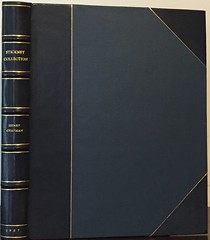
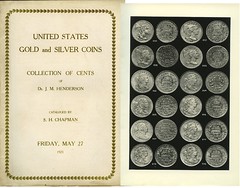
Lots 264 and 284
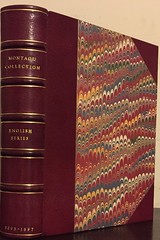
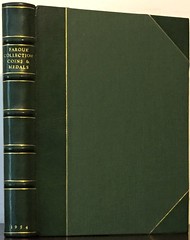
Lots 761 and 765
www.numisbook.com
THE BOOK BAZARRE
NEW BOOK: CHERRYPICKERS' GUIDE, 6TH EDITION, VOLUME I
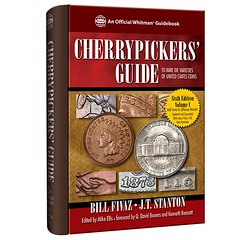 Whitman Publishing announces the release of a new, expanded, and updated 25th-anniversary volume of the Cherrypickers’ Guide to Rare Die Varieties of United States Coins. The popular award-winning series shows collectors how to find valuable coins hidden in pocket change and dealers’ inventories. The new sixth edition, volume I, covers half cents, large cents, small cents, two-cent and three-cent pieces, and nickels. It will be available on September 29, 2015, online (including at www.Whitman.com) and from booksellers, hobby shops, and coin dealers nationwide, for $39.95. The book can also be borrowed for free as a benefit of membership in the American Numismatic Association, through the Dwight N. Manley Numismatic Library.
Whitman Publishing announces the release of a new, expanded, and updated 25th-anniversary volume of the Cherrypickers’ Guide to Rare Die Varieties of United States Coins. The popular award-winning series shows collectors how to find valuable coins hidden in pocket change and dealers’ inventories. The new sixth edition, volume I, covers half cents, large cents, small cents, two-cent and three-cent pieces, and nickels. It will be available on September 29, 2015, online (including at www.Whitman.com) and from booksellers, hobby shops, and coin dealers nationwide, for $39.95. The book can also be borrowed for free as a benefit of membership in the American Numismatic Association, through the Dwight N. Manley Numismatic Library.
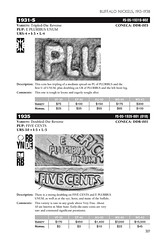 The Cherrypickers’ Guide includes 1,100 close-up photographs plus text descriptions to guide the reader, as well as market information and values in multiple grades, for more than 680 varieties. Appendices include essays on types of doubling, how to examine your coins, Proof set varieties, collector clubs, recommended reading, and other beginner and advanced topics.
The Cherrypickers’ Guide includes 1,100 close-up photographs plus text descriptions to guide the reader, as well as market information and values in multiple grades, for more than 680 varieties. Appendices include essays on types of doubling, how to examine your coins, Proof set varieties, collector clubs, recommended reading, and other beginner and advanced topics.
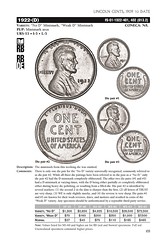
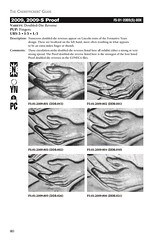
David Bowers and Kenneth Bressett.
Spiralbound hardcover, 512 pages, Retail $39.95
Cherrypickers' Guide to Rare Die Varieties, 6th Edition, Volume I
(/www.whitman.com/store/Inventory/Detail/Cherrypickers-Guide-to-Rare-Die-Varieties-6th-Edition-Volume-I+0794843182)
NEW BOOK: BUST DIME VARIETY IDENTIFICATION GUIDE
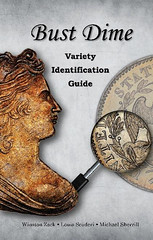 Winston Zack, Louis Scuderi, Michael Sherrill, and many other bust dime enthusiasts are very pleased to announce a new bust dime book that will be available at ANA. After nearly two years in the works and with contributions by many of the leading experts on bust dimes, the authors have created "Bust Dime Variety Identification Guide."
Winston Zack, Louis Scuderi, Michael Sherrill, and many other bust dime enthusiasts are very pleased to announce a new bust dime book that will be available at ANA. After nearly two years in the works and with contributions by many of the leading experts on bust dimes, the authors have created "Bust Dime Variety Identification Guide."
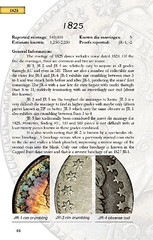
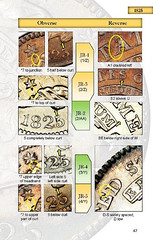
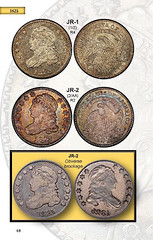
http://jrcs.us11.list-manage1.com/track/click?u=74a0e3c37d154d935bdeb2daf&id=028854736e&e=9b1d009ea9
NEW BOOK: BANKNOTES OF BRITISH MALAYA
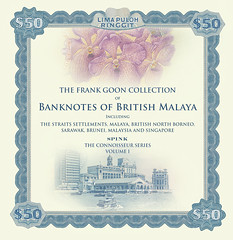 Spink is proud to announce that we are the key sponsor and official auctioneer of the International World Stamp Exhibition to be held in Singapore on the 14th – 19th August 2015. Spink will be holding five sales, each containing quality material of the highest calibre; appealing to both the philatelic and numismatic market. However, Spink have a little more up their sleeve than just that.
Spink is proud to announce that we are the key sponsor and official auctioneer of the International World Stamp Exhibition to be held in Singapore on the 14th – 19th August 2015. Spink will be holding five sales, each containing quality material of the highest calibre; appealing to both the philatelic and numismatic market. However, Spink have a little more up their sleeve than just that.
Tel: +44 (0)20 7563 4046| Email: books@spink.com
Spink to Launch Book Commemorating The Frank Goon Collection, A Testament to a Lifetime of Dedicated Collecting
(www.spink.com/press-releases/spink-to-launch-book-commemorating-the-frank-goon-collection,-a-testament-to-a-lifetime-of-dedicated-collecting.aspx/?id=books&year=2015)
THE BOOK BAZARRE
NEW BOOK: 2014 ROYAL CANADIAN MINT REPORT
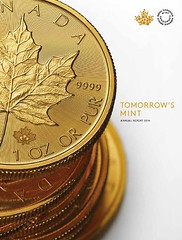
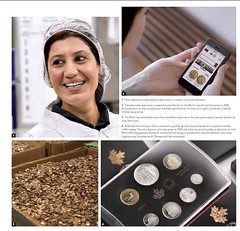
http://www.mint.ca/store/dyn/PDFs/RCMint_AR_2014-15_E.pdf
BOOK REVIEW: COIN OF THE YEAR’
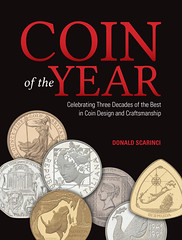 On first view of this book the reader is drawn to its photographs -- and what glorious coin photographs they are! – they occupy the major portion of the book. These are the winning coins of the world that are the very best in each year which captured the title Coin of The Year, also the name of the book.
On first view of this book the reader is drawn to its photographs -- and what glorious coin photographs they are! – they occupy the major portion of the book. These are the winning coins of the world that are the very best in each year which captured the title Coin of The Year, also the name of the book.
NEW BOOK: COIN OF THE YEAR
(www.coinbooks.org/esylum_v18n05a05.html)
BOOK REVIEW: MEDALLIC ART OF THE ANS, 1865-2014
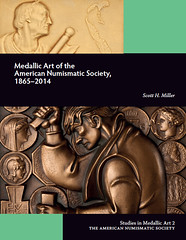 Medallic Art of the American Numismatic Society, 1865-2014.
By Scott H. Miller. Studies in Medallic Art 2, American Numismatic Society, New York, N.Y. 182 pages hard cover, profusely illustrated, photographs by Alan Roche.
Retail price $70 to ANS members, $100 to non-members.
Medallic Art of the American Numismatic Society, 1865-2014.
By Scott H. Miller. Studies in Medallic Art 2, American Numismatic Society, New York, N.Y. 182 pages hard cover, profusely illustrated, photographs by Alan Roche.
Retail price $70 to ANS members, $100 to non-members.
http://numismatics.org/Store/ANSMedals

NOTES FROM E-SYLUM READERS: JULY 26, 2015
Volume 18, Number 29, July 19, 2015
(www.coinbooks.org/club_nbs_esylum_v18n29.html)
NOTES FROM E-SYLUM READERS: JULY 12, 2015 : What are Bergrechnungsmarke?
(www.coinbooks.org/esylum_v18n28a13.html)
MORE ON BERGRECHNUNGSMARKE
(www.coinbooks.org/esylum_v18n29a23.html)
ATOCHA MONEY CHAIN AMONG AUCTION ITEMS
(www.coinbooks.org/esylum_v18n29a40.html)
1972 - Current
SRI LANKA
(http://coins.lakdiva.org/srilanka/srilanka.html)
WHY ARE SOME UK COINS MAGNETIC?
(www.coinbooks.org/esylum_v18n29a28.html)
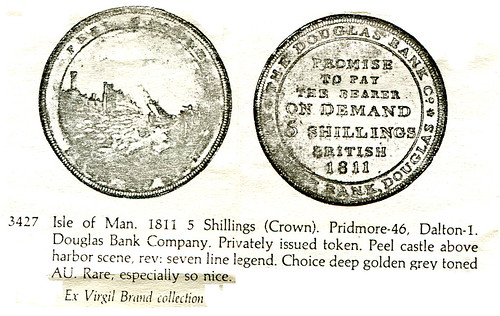
QUERY: ISLE OF MAN COINS PROVENANCE SOUGHT
(www.coinbooks.org/esylum_v18n29a22.html)
http://www.coinbooks.org/esylum_v18n29a22.html
(www.coinbooks.org/esylum_v18n29a22.html)
HOW TO KEEP ROBBERS AWAY FROM YOUR COIN COLLECTION
NOTES FROM E-SYLUM READERS: JULY 19, 2015 : The Rocky Mountain News
(www.coinbooks.org/esylum_v18n29a11.html)
THE AMUSEMENT PARK DIME
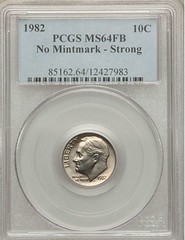 The 1982-P Roosevelt No P dime touched off a wave of change-scouring when stories started appearing in Ohio and Pennsylvania newspapers about the discovery of odd dimes that did not have a Mint mark. Since 1980, every circulating coin, except cents, has a Mint mark above the date. These dimes, though, were blank.
The 1982-P Roosevelt No P dime touched off a wave of change-scouring when stories started appearing in Ohio and Pennsylvania newspapers about the discovery of odd dimes that did not have a Mint mark. Since 1980, every circulating coin, except cents, has a Mint mark above the date. These dimes, though, were blank.
THE AMUSEMENT PARK DIME
(www.coinworld.com/voices/gerald-tebben/2015/07/the_amusement_parkd.html)
H. C. KENDRICK OF BOSTON: NO DEMAND FOR GOLD DOLLARS
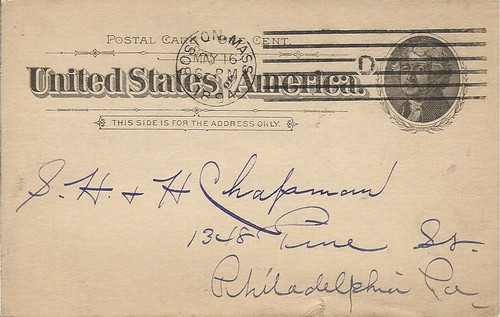

KENDRICK, H. C.
(https://sites.google.com/site/numismaticmallcom/encyclopedic-dictionary-of-numismatic-biographies/kendrick-h-c)
GOLD COIN USE IN THE EAST IN 1896
(www.coinbooks.org/esylum_v18n29a21.html)
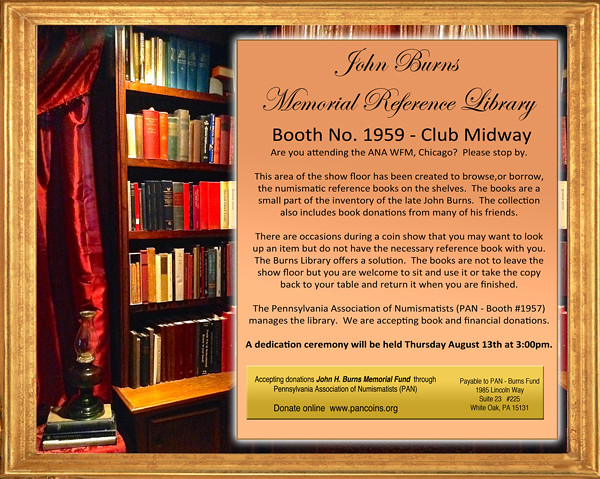
1872 LIBERTY SEATED DOLLAR WITH 'REJECTED' COUNTERSTAMP
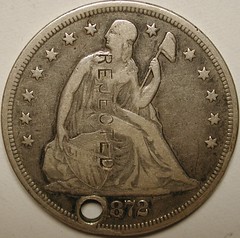
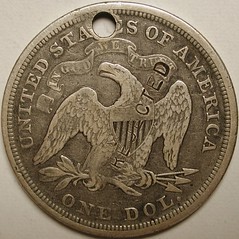


1872 Liberty Seated Dollar, holed, with two REJECTED Counterstamps
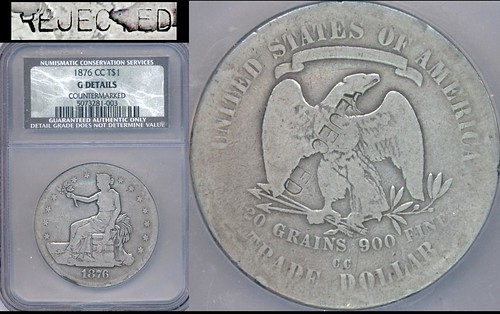
1876-CC Trade Dollar with REJECTED Counterstamp
www.lsccweb.org
AN ANTIQUE COIN CURIOSITY FOUND IN A BARN
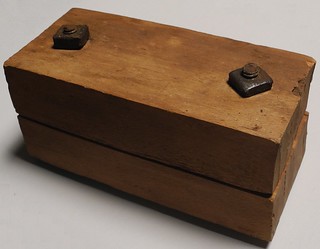 At the Bay State Coin Show last year, Dennis Fortier and I were staffing the Liberty Seated Collectors Club / Barber Coin Collectors' Society Club Table. With interesting exhibits, we had our usual traffic, and our usual great time. Then on Friday afternoon, a BCCS member from Vermont that I’ve known for years stopped by, like he always does when we have a table. I usually see him in Manchester at the NH Coin Expo, but this time he was in Massachusetts, and this time he said he had something to show me. I always like hearing this! It doesn’t happen all that often.
At the Bay State Coin Show last year, Dennis Fortier and I were staffing the Liberty Seated Collectors Club / Barber Coin Collectors' Society Club Table. With interesting exhibits, we had our usual traffic, and our usual great time. Then on Friday afternoon, a BCCS member from Vermont that I’ve known for years stopped by, like he always does when we have a table. I usually see him in Manchester at the NH Coin Expo, but this time he was in Massachusetts, and this time he said he had something to show me. I always like hearing this! It doesn’t happen all that often.

Wood block containing lead patches with impressions
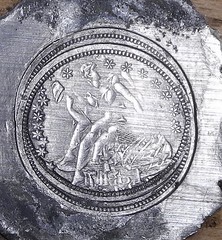
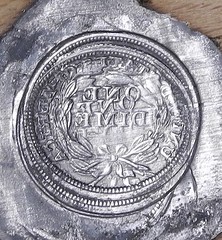
Impressions of 1847 Liberty Seated Dime Obverse and Reverse
www.lsccweb.org
THE ROYAL SOCIETY'S COPLEY MEDAL
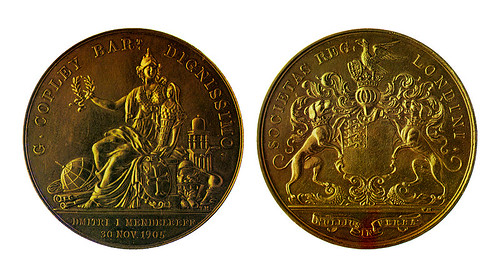
Copley medal Awarded to Mendeleev
Prof Peter Higgs wins the Royal Society's Copley Medal
(www.bbc.com/news/uk-scotland-edinburgh-east-fife-33594055)
WAYNE'S NUMISMATIC DIARY: FEBRUARY 12, 2012
(www.coinbooks.org/esylum_v15n07a23.html)

BRENNER AND WHISTLER'S PEACOCK
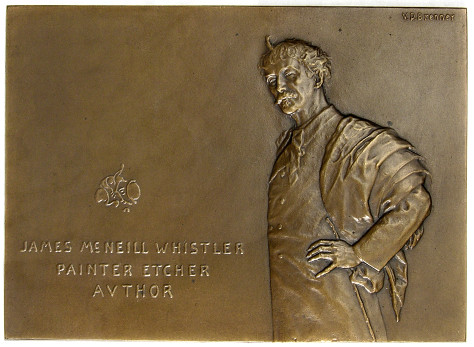
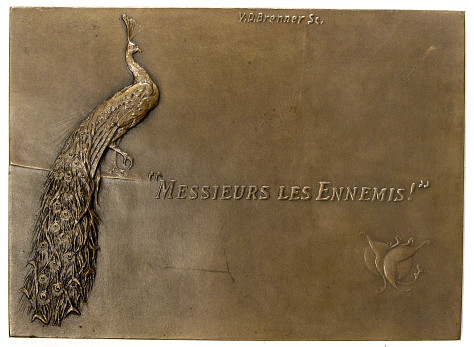
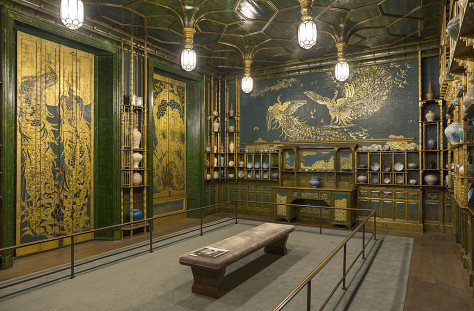
WHISTLER’S PEACOCKS
(www.anspocketchange.org/whistlers-peacocks/)
MORE ON MEDALS MADE OF SOAP




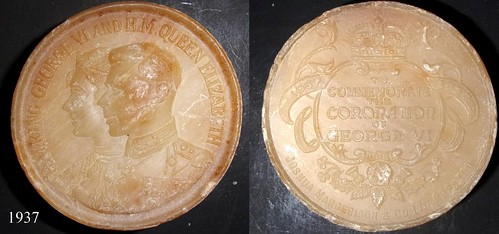

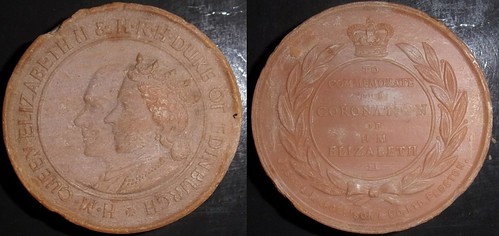
NOTES FROM E-SYLUM READERS: JULY 19, 2015: 1951 Festival of Britain Medal Made of Soap
(www.coinbooks.org/esylum_v18n29a11.html)
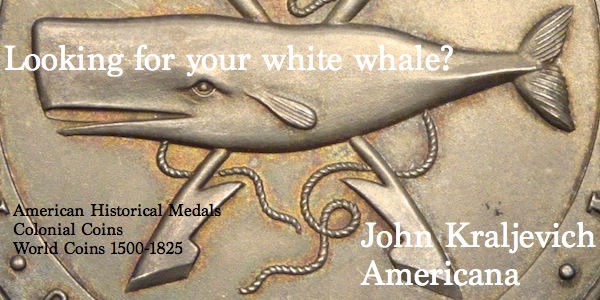
THE COIN-TREE IN BRITAIN AND IRELAND
Small Change: Economics and the coin-tree in Britain and Ireland.
Post-Medieval Archaeology 49 (1), 114-130
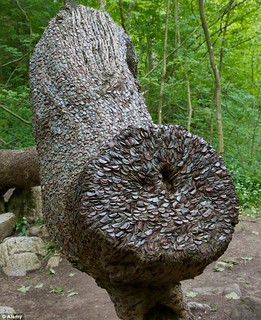 Throughout the c.2000 year period coins have been circulated in Britain, they have also been ritually employed, most notably as votive deposits. Focusing specifically on the understudied custom of the British coin-tree, whereby coins are ritually embedded into the barks of trees, this paper considers the coin’s role and applicability as a deposit. It aims to demonstrate that our understanding of the coin’s past, present, and future ritual employment is not only aided by a consideration of economics and the coin’s secular function; it would
be utterly incomplete without it.
Throughout the c.2000 year period coins have been circulated in Britain, they have also been ritually employed, most notably as votive deposits. Focusing specifically on the understudied custom of the British coin-tree, whereby coins are ritually embedded into the barks of trees, this paper considers the coin’s role and applicability as a deposit. It aims to demonstrate that our understanding of the coin’s past, present, and future ritual employment is not only aided by a consideration of economics and the coin’s secular function; it would
be utterly incomplete without it.
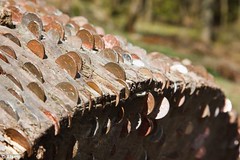 Evidently, coins have been ritually employed in Britain for at least as long as they have been economically employed. However, the two uses of the coin should not be stringently divided, in this paper and elsewhere, for they are two sides of the same coin (forgive the pun). It is argued in this paper that the coin’s economic purpose is intrinsic to its appropriation as a ritual deposit, and that an examination of wider economical patterns is essential to the contextualisation of coin-centred traditions and ritual practices. In order to demonstrate this inextricable relationship, this paper focuses on an understudied coin tradition in the British Isles: the coin-tree.
Evidently, coins have been ritually employed in Britain for at least as long as they have been economically employed. However, the two uses of the coin should not be stringently divided, in this paper and elsewhere, for they are two sides of the same coin (forgive the pun). It is argued in this paper that the coin’s economic purpose is intrinsic to its appropriation as a ritual deposit, and that an examination of wider economical patterns is essential to the contextualisation of coin-centred traditions and ritual practices. In order to demonstrate this inextricable relationship, this paper focuses on an understudied coin tradition in the British Isles: the coin-tree.
Small Change: Economics and the coin-tree in Britain and Ireland
(www.academia.edu/14114026/Small_Change_Economics_and_the_coin-tree_in_Britain_and_Ireland)
ON FREY'S DICTIONARY OF NUMISMATIC NAMES
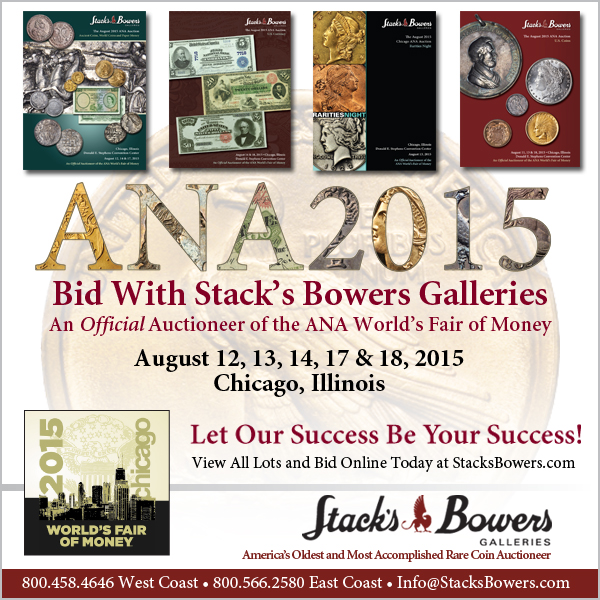
OTHER 2015 ANA CONVENTION EVENTS
Bob Leonard writes:
Len Augsburger writes:
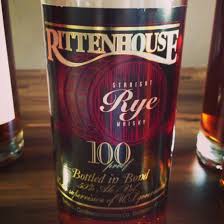 As has been their tradition, numismatic authors Len Augsburger and Joel Orosz will hold forth from a one-day table (#1945) at the ANA on Wednesday, August 12. This year’s theme is “All Things Rittenhouse,” and a variety of documents, medals, and engravings will be exhibited, including a piece of contemporary correspondence which been off the market for several generations. Feel free to stop by any time on Wednesday.
As has been their tradition, numismatic authors Len Augsburger and Joel Orosz will hold forth from a one-day table (#1945) at the ANA on Wednesday, August 12. This year’s theme is “All Things Rittenhouse,” and a variety of documents, medals, and engravings will be exhibited, including a piece of contemporary correspondence which been off the market for several generations. Feel free to stop by any time on Wednesday.
SPRAGUE & BLODGETT’S GEORGIA MINSTRELS COUNTERSTAMP
 One of the most popular and complicated cultural forms that enlivened popular entertainment in the nineteenth-century United States was the minstrel show.
One of the most popular and complicated cultural forms that enlivened popular entertainment in the nineteenth-century United States was the minstrel show.
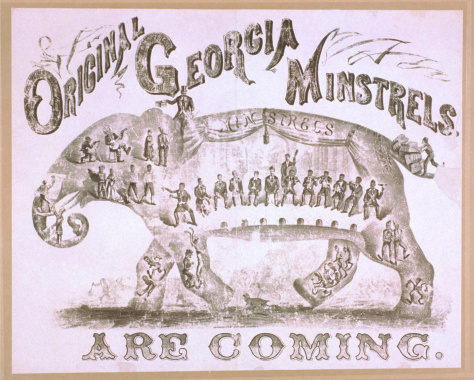
ADMIT ONE: SPRAGUE & BLODGETT’S GEORGIA MINSTRELS
(www.anspocketchange.org/admit-one-sprague-blodgetts-georgia-minstrels/)
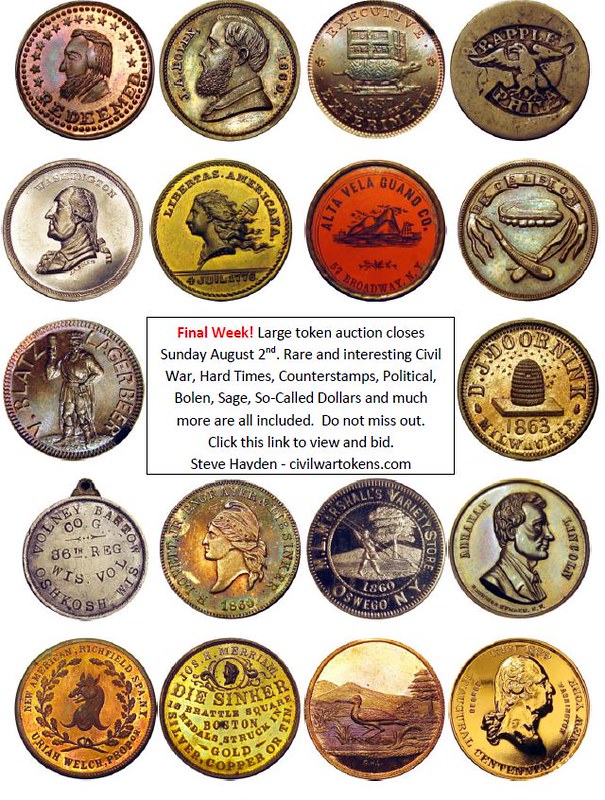
INTERNATIONAL CONFERENCE ON JOSEPH ECKHEL A SUCCESS
 The international conference Ars critica numaria. Joseph Eckhel (1737-1798) and the development of numismatic method took place in Vienna from May 27 to 30, 2015. The congress, organised by Bernhard Woytek and Daniela Williams, was made possible through funding by the Austrian Science Fund (FWF) as part of the project “Joseph Eckhel (1737-1798) and his numismatic network” (project no. P25282).
The international conference Ars critica numaria. Joseph Eckhel (1737-1798) and the development of numismatic method took place in Vienna from May 27 to 30, 2015. The congress, organised by Bernhard Woytek and Daniela Williams, was made possible through funding by the Austrian Science Fund (FWF) as part of the project “Joseph Eckhel (1737-1798) and his numismatic network” (project no. P25282).
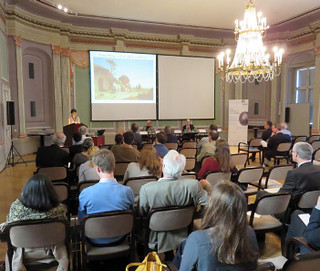 The first session on May 28 focused on studies before (and contemporary to) Eckhel and how they contributed to shaping his thought and work. Papers provided a general background on collecting and research during the Enlightenment in Austria, an analysis about how Jesuit scholars approached ancient numismatics, a review of the study of ancient art in the 18th century (Montfaucon, Caylus and Winckelmann) and examined the contribution of Erasmus Frölich to Viennese numismatics (speakers: K. Vocelka, J. Guillemain, V. Heenes, F. de Callataÿ).
The first session on May 28 focused on studies before (and contemporary to) Eckhel and how they contributed to shaping his thought and work. Papers provided a general background on collecting and research during the Enlightenment in Austria, an analysis about how Jesuit scholars approached ancient numismatics, a review of the study of ancient art in the 18th century (Montfaucon, Caylus and Winckelmann) and examined the contribution of Erasmus Frölich to Viennese numismatics (speakers: K. Vocelka, J. Guillemain, V. Heenes, F. de Callataÿ).
Joseph Eckhel (1737-1798) and ancient numismatics in the Enlightenment
(www.coinsweekly.com/en/News/4?&id=3558)
JAMES DODSLEY CUFF (1780-1853)
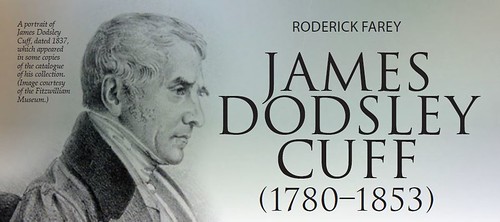
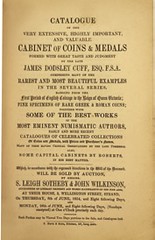 The collection was catalogued by H. O.
Cureton, a prominent dealer, and lasted a total
of 18 days starting on June 8, 1854. There were
2,506 lots and the list of buyers reads like a Who’s
Who of mid-19th century numismatists: Wigan,
Bergne, Shepherd and the dealers Lincoln,
Webster and Dantziger. Cureton managed to
acquire something like a third of the whole
collection and William Chaffers was successful
in getting approximately a fifth.
The collection was catalogued by H. O.
Cureton, a prominent dealer, and lasted a total
of 18 days starting on June 8, 1854. There were
2,506 lots and the list of buyers reads like a Who’s
Who of mid-19th century numismatists: Wigan,
Bergne, Shepherd and the dealers Lincoln,
Webster and Dantziger. Cureton managed to
acquire something like a third of the whole
collection and William Chaffers was successful
in getting approximately a fifth.
http://digital.tokenpublishing.com/?pdfissueid={88FC0BD3-8C60-4315-AB51-F89AA3F4439B}
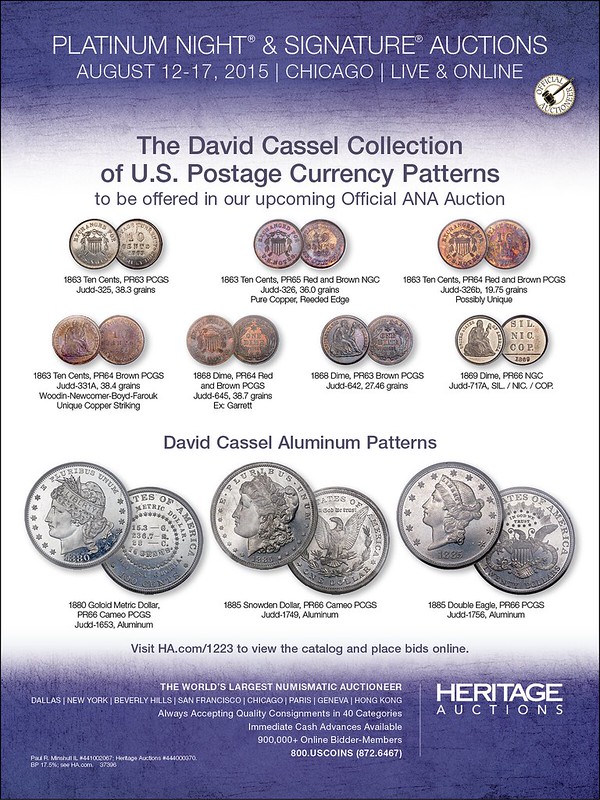
COUNTERFEITER TARGETS HONG KONG FANCY SERIAL NUMBERS

Forgers give new Hong Kong $150 notes some fancy serial numbers
(www.coinworld.com/insights/forgers-givehong-kong-s-new--150-notes-some-fancy-serial-numbers.html#)
ALVES REIS: THE MAN WHO STOLE PORTUGAL
(www.coinbooks.org/esylum_v18n29a32.html)
QUERY: SHIPMENT DATE SOUGHT FOR 1941-S FRENCH INDOCHINA COINS
THE BOOK BAZARRE
WWII HEROINE VIOLETTE SZABO'S MEDALS SOLD
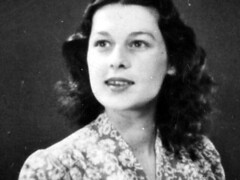 Medals awarded to a second world war heroine who was tortured and ultimately murdered by the Nazis are hoped to fetch over £250,000 at auction.
Medals awarded to a second world war heroine who was tortured and ultimately murdered by the Nazis are hoped to fetch over £250,000 at auction.
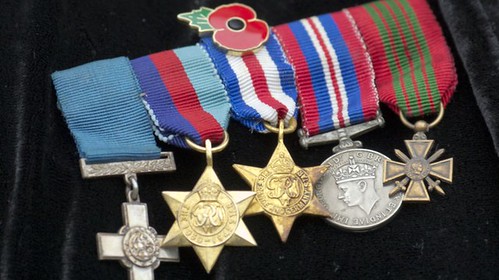
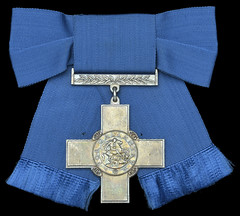 The world-famous George Cross awarded to the Special Operations Executive secret
agent Violette Szabό – one of only four GCs to women – fetched a record price of
£312,000 (£260,000 hammer price) at Dix Noonan Webb, the international coins and
medals specialists, in London today (Wednesday 22 July).
The world-famous George Cross awarded to the Special Operations Executive secret
agent Violette Szabό – one of only four GCs to women – fetched a record price of
£312,000 (£260,000 hammer price) at Dix Noonan Webb, the international coins and
medals specialists, in London today (Wednesday 22 July).
WW2 heroine Violette Szabo's medals go to auction
(www.itv.com/news/2015-07-22/ww2-heroine-violet-szabos-medals-go-to-auction/)
COUPLE SEARCHES FOR WWII ARCTIC MEDAL HERO
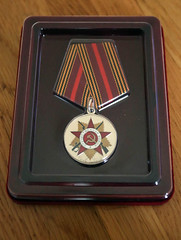 A couple have launched a desperate search to find a Second World War hero after his prestigious Arctic Convoy campaign medal was sent to them by mistake.
A couple have launched a desperate search to find a Second World War hero after his prestigious Arctic Convoy campaign medal was sent to them by mistake.
Riddle of wartime medal in search of Arctic hero
(www.express.co.uk/news/uk/593778/Riddle-wartime-medal-search-Arctic-hero)

Archives International Auctions, Internet Auction 2015
A Live Internet bidding sale of 1,262 lots
Starting Tuesday, August 4th, 2015 at 10:30am

View the Virtual Catalog
Download the Catalog in PDF format
ARCHIVES INTERNATIONAL AUCTIONS, LLC
1580 Lemoine Avenue, Suite #7
Fort Lee, NJ 07024
Phone: 201-944-4800
Email:
info@archivesinternational.com
WWW.ARCHIVESINTERNATIONAL.COM
SOME RECENT COIN DESIGNS: JULY 26, 2015
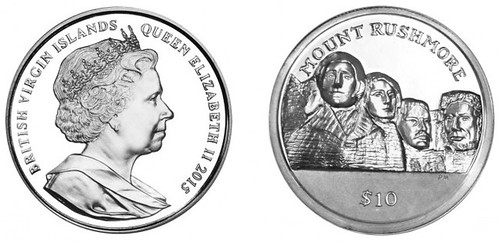
Pobjoy Mint Utilizes High Relief Technique for Mount Rushmore Silver Coin
(http://news.coinupdate.com/pobjoy-mint-utilizes-high-relief-technique-for-mount-rushmore-silver-coin/)


THE BOOK BAZARRE
HOWARD DANIEL'S 2015 SUMMER FUN SHOW REPORT
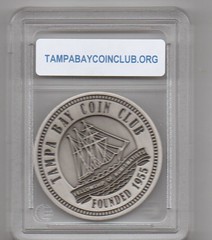
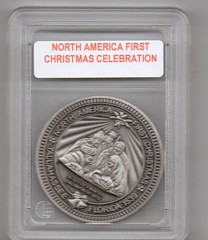
North America's first Christmas?
(www.tallahasseemagazine.com/November-December-2012/Not-a-Merry-Christmas/)
WAYNE'S NUMISMATIC DIARY: JULY 26, 2015
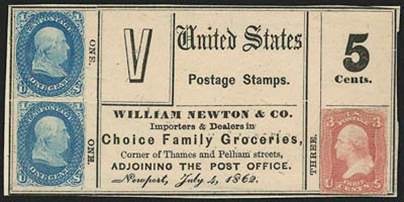
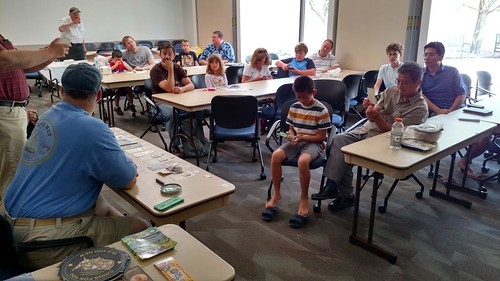
NOVA Kids Attendees at the Annandale Coin Show July 25, 2015
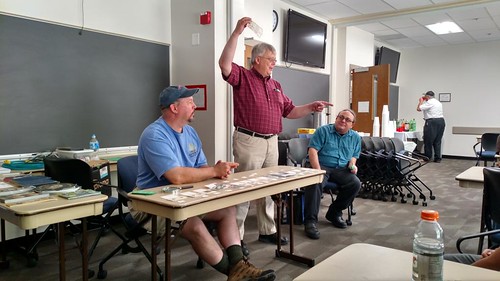
Tom Kays, Jon Radel (in an animated mid-sale pose), and Eric Schena
WAYNE'S NUMISMATIC DIARY: JULY 19, 2015
(www.coinbooks.org/esylum_v18n29a30.html)

KÜNKER AUCTIONS 263-264 RESULTS
Fritz Rudolf Künker, Osnabrück
Auction 263-264
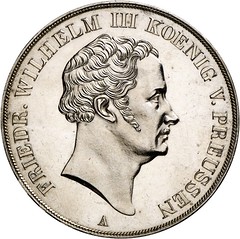
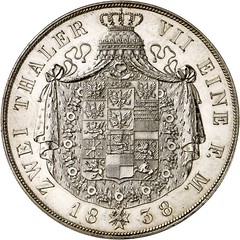

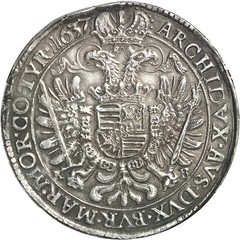
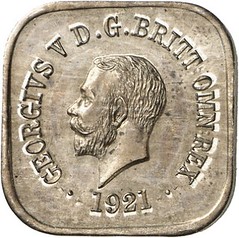
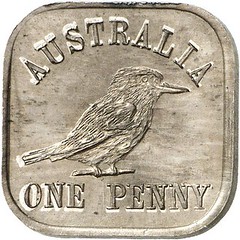
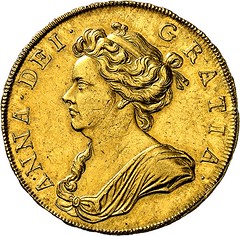
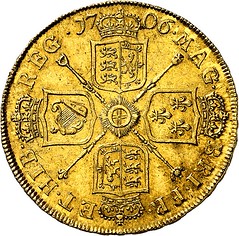
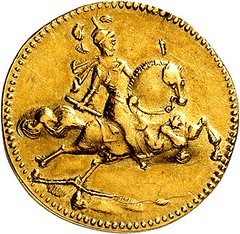
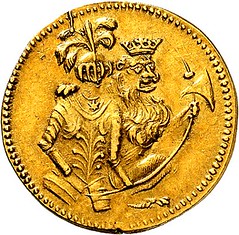
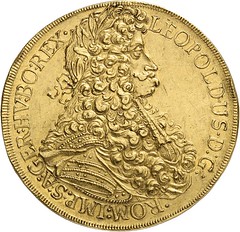
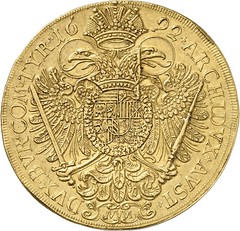
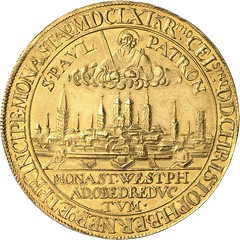

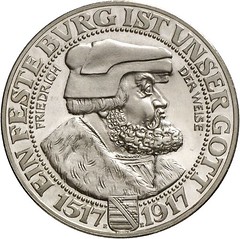
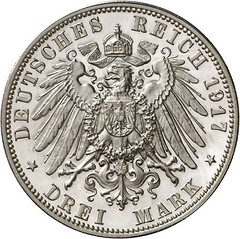
THE BOOK COLLECTOR
Book Collector
(www.gcfl.net/archive.php?funny=6979)
